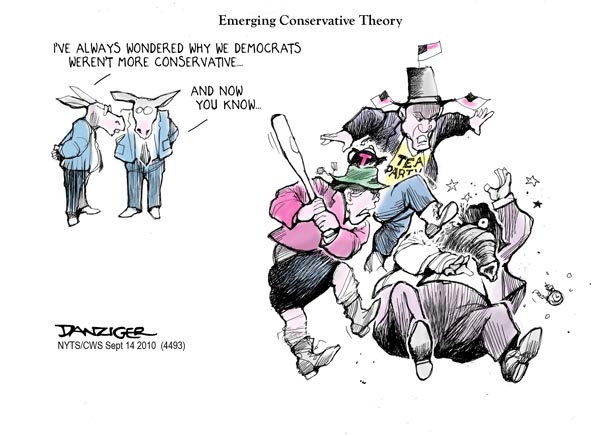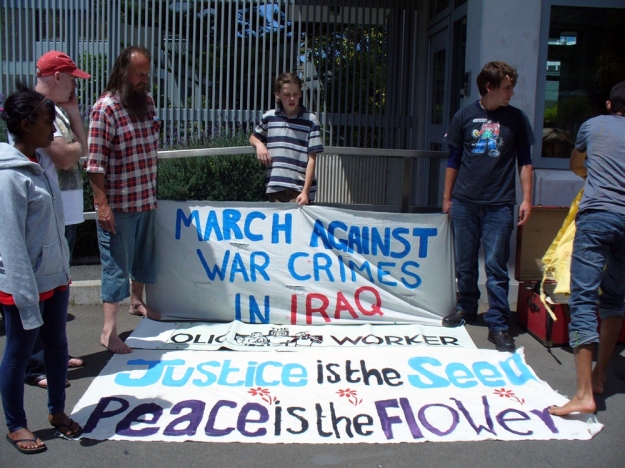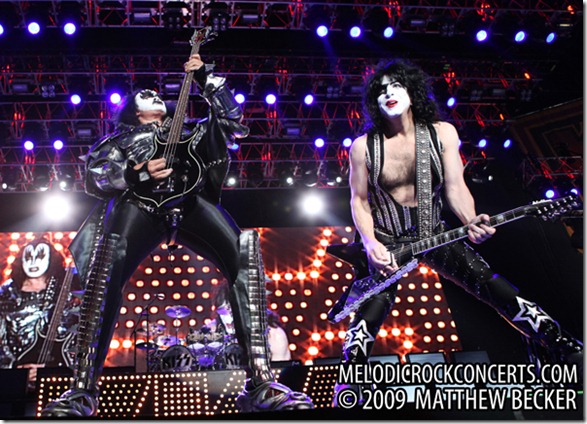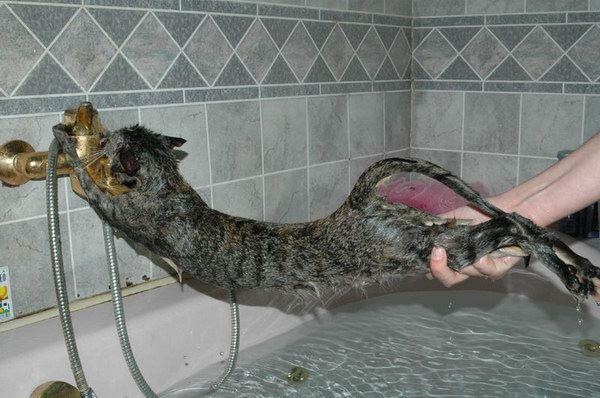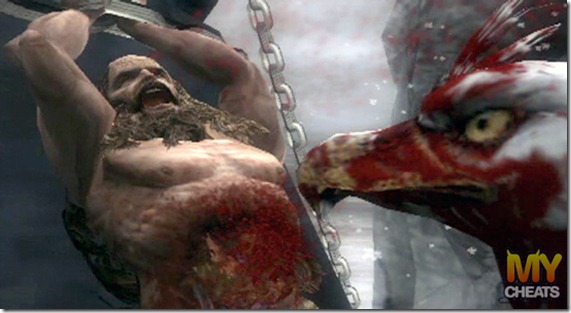Posts Tagged mythology
Psychology of Generations —The Changing of the Generational Guard: Why There Is Less Violence but More Depression…. And What’s Good About That
Posted by sillymickel in activism, authenticity, being yourself, Class, Culture, economics, Generations, globalrevolution, History, individualism, life, meaning, nonconform, occupywallstreet, philosophy, Politics, psychology, spirituality on February 23, 2013
Consciousness Evolution from the WWII to the Millennial Generations: A Hierarchy of Healing, a Global Healing Crisis, and the Unseen Revolution 
Wounded Deer and Centaurs, Chapter Fourteen: Psychological History of Today’s Generations and Changing of the Guard 
Healing Crisis Means Needing to Get “Sicker” Before We Can Be “Weller” and Making It When You DON’T Fake It: Centaurs, Wounded Deer, and the Consciousness Revolution, Untold
What’s in Your Head, Zombie? Being Really Sick, But Denying It — WWII Generation, Nazis, KKK, Right Wing, Tea Party
Birth Woes ~ World Wars and Can’t Know What You Don’t Know … What’s in Your Head, Zombie? 
Getting Sick In Order to Get Well
What does this all mean? What does this portend? What might be the outcome of this emerging perinatal unconscious? In other words, consciousness evolution or apocalypse? And what is the meaning of this change in consciousness and of these wounded deer and centaurs? Is there hope in this development?
To answer what is the portent of these wounded deer and centaurs and what the emerging perinatal unconscious might mean on a macrocosmic or societal-global scale, it is helpful to look at what an emerging perinatal unconscious portends on the individual or microcosmic level.
What we have learned from the experiential modalities—holotropic breathwork™, primal therapy, rebirthing, vivation, and others like them—is that unerringly people need to get “sicker” before they can get well. This should not be news to psychoanalysts or any of the other mainstream psychotherapists or counselors either.
Healing Crisis

 Basically, the underlying repressed material must come to the “surface,” must become more conscious…and obviously when it becomes more conscious its accompanying symptoms are exacerbated. This can be called a healing crisis in that the symptoms get worse, more obvious, more blatant; and there is a period of acting them out before integration and resolution happens.
Basically, the underlying repressed material must come to the “surface,” must become more conscious…and obviously when it becomes more conscious its accompanying symptoms are exacerbated. This can be called a healing crisis in that the symptoms get worse, more obvious, more blatant; and there is a period of acting them out before integration and resolution happens.
One Must “Die” to One’s Sickness Before One Can Be “Born” Well

 When Grof talks about birth/death scenarios in the perinatal unconscious, he is including these sorts of healings, where one must “die” to one’s sickness before one can be “reborn” into another way of being, without those sick patterns or symptoms.
When Grof talks about birth/death scenarios in the perinatal unconscious, he is including these sorts of healings, where one must “die” to one’s sickness before one can be “reborn” into another way of being, without those sick patterns or symptoms.
Degrees of Disease
Dissociation – Completely Split Off
It’s YOU! YOU’re the f&^$#r!
 We see a progression over the last century in which there was complete dissociation from the perinatal unconscious by those of the Fifties, the World-War-Two, and previous generations—hence complete projection of it on The Other—to lesser dissociations from it by the generations since, baby-boomer and afterward, which involve more awareness of it as being a part of oneself and less projection of it on The Other.
We see a progression over the last century in which there was complete dissociation from the perinatal unconscious by those of the Fifties, the World-War-Two, and previous generations—hence complete projection of it on The Other—to lesser dissociations from it by the generations since, baby-boomer and afterward, which involve more awareness of it as being a part of oneself and less projection of it on The Other.
Wounded Deer

 In this latter instance, there is more suffering from it and more individual acting out of it, so that in a sense one appears “sicker”—the perinatal is more obvious in one’s behavior, taking more individual forms, and it is more easily recognized and seen to be a personal problem…a “sickness.” Earlier I described this consciousness as being the way of the centaur, for it reflects Chiron, in ancient myths, having an ongoing wound but eventually becoming a teacher and healer.
In this latter instance, there is more suffering from it and more individual acting out of it, so that in a sense one appears “sicker”—the perinatal is more obvious in one’s behavior, taking more individual forms, and it is more easily recognized and seen to be a personal problem…a “sickness.” Earlier I described this consciousness as being the way of the centaur, for it reflects Chiron, in ancient myths, having an ongoing wound but eventually becoming a teacher and healer.
To understand the ways the perinatal manifests depending upon one’s “closeness” to it, let us contrast the two extremes of being split off from it and being close to it.
Being Really Sick, But Denying It: WWII Generation, Nazis, KKK, Right Wing, Tea Party
Can’t Know That You Don’t Know
![clip_image010[3] clip_image010[3]](https://apocalypseknow.files.wordpress.com/2012/06/clip_image0103.jpg?w=306&h=217)
 First let us take a look at what the perinatal appears like when it is completely split off from one’s conscious personality. This complete splitting off from the perinatal entails
First let us take a look at what the perinatal appears like when it is completely split off from one’s conscious personality. This complete splitting off from the perinatal entails 
 a complete repression and denial of it. Consequently, one has absolutely no access to it, and thus one is in total ignorance of the underlying motivations of one’s actions. One unconsciously acts out perinatal elements and traumas and manifests them in one’s behavior, rationalizing all the while that one has really good—non-perinatal, “real world”—reasons for why one is doing the things one is doing.
a complete repression and denial of it. Consequently, one has absolutely no access to it, and thus one is in total ignorance of the underlying motivations of one’s actions. One unconsciously acts out perinatal elements and traumas and manifests them in one’s behavior, rationalizing all the while that one has really good—non-perinatal, “real world”—reasons for why one is doing the things one is doing.
What”s in Your Head, Zombie?
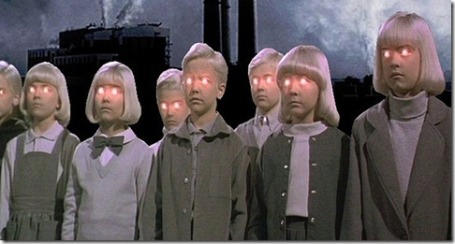 Psychohistorians deem this state to be such an oblivious one that they use the term trance-state for it, fully intending all the implications and connotations that term engenders. That is, they are saying that people who are this repressed and split off do their acting zombie-like and out of motivations completely hidden from themselves. [Footnote 1]
Psychohistorians deem this state to be such an oblivious one that they use the term trance-state for it, fully intending all the implications and connotations that term engenders. That is, they are saying that people who are this repressed and split off do their acting zombie-like and out of motivations completely hidden from themselves. [Footnote 1]
Birth Woes ~ World Wars

 In such total ignorance, and of course being totally ignorant that one is in ignorance, people in the past century have been able to act out their perinatal underbellies in ways to make such hideous and all-encompassing wars as World War I and World War II possible.
In such total ignorance, and of course being totally ignorant that one is in ignorance, people in the past century have been able to act out their perinatal underbellies in ways to make such hideous and all-encompassing wars as World War I and World War II possible.
![clip_image013[3] clip_image013[3]](https://apocalypseknow.files.wordpress.com/2012/06/clip_image0133.jpg?w=423&h=298) Leaving aside for a moment the myriad ways the perinatal has unconsciously been acted out in this century in creating the current situation in which we are on the brink of extinction—which can be considered the most serious consequences of this splitting off imaginable—simply focusing on this century’s major wars as evidence of perinatal acting-out alone is instructive.
Leaving aside for a moment the myriad ways the perinatal has unconsciously been acted out in this century in creating the current situation in which we are on the brink of extinction—which can be considered the most serious consequences of this splitting off imaginable—simply focusing on this century’s major wars as evidence of perinatal acting-out alone is instructive.
![clip_image014[3] clip_image014[3]](https://apocalypseknow.files.wordpress.com/2012/06/clip_image0143.gif?w=410&h=331) The Nazis, in particular, were extreme in their dissociation from their perinatal, in their projection of it onto the Jews, and their consequent ability to act it out in horrific ways on them and others. Alice Miller and Lloyd deMause have each detailed the psychodynamics of this projection of primal pain—both perinatal and childhood—in the creation of the people that Adolf Hitler and the Nazis became in their adulthood. [Footnote 2]
The Nazis, in particular, were extreme in their dissociation from their perinatal, in their projection of it onto the Jews, and their consequent ability to act it out in horrific ways on them and others. Alice Miller and Lloyd deMause have each detailed the psychodynamics of this projection of primal pain—both perinatal and childhood—in the creation of the people that Adolf Hitler and the Nazis became in their adulthood. [Footnote 2]
![clip_image016[3] clip_image016[3]](https://apocalypseknow.files.wordpress.com/2012/06/clip_image0163.jpg?w=479&h=359) The Nazis present us with the patterns of these processes of dissociation and projection in blatant and obvious relief. The way Nazis, especially in concentration camps, acted out perinatal trauma on their prisoners has been described in great detail by Grof as well. [Footnote 3]
The Nazis present us with the patterns of these processes of dissociation and projection in blatant and obvious relief. The way Nazis, especially in concentration camps, acted out perinatal trauma on their prisoners has been described in great detail by Grof as well. [Footnote 3]
Wounded Deer and Centaurs – Being “Weller,” But Appearing Sicker – Perinatal Awareness of Boomers and Beyond
Perinatal Boomers and Beyond—We Know THAT We Don’t Know…We Could Be Wrong.… But You Certainly Are
Being “Weller,” But Appearing Sicker—Generations Since
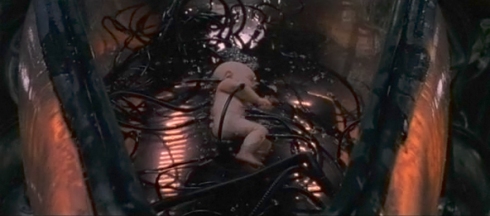 As I said, contrasted with being completely split off — dissociated — from one’s perinatal unconscious, as the Fifties and WWII Generation are predominantly, is being less cut off from it and having
As I said, contrasted with being completely split off — dissociated — from one’s perinatal unconscious, as the Fifties and WWII Generation are predominantly, is being less cut off from it and having  some access to its energies. This means that rather than being totally and blindly driven by these forces, which are acting on one indirectly,
some access to its energies. This means that rather than being totally and blindly driven by these forces, which are acting on one indirectly, one actually feels them somewhat: One has a sense of their being a part of one’s experience as opposed to living within them so thoroughly that one has not a clue of their existence.
one actually feels them somewhat: One has a sense of their being a part of one’s experience as opposed to living within them so thoroughly that one has not a clue of their existence.
This means that one has more options than to act them out, but it also means they make one aware of one’s perinatal sickness. One feels them, suffers from them, struggles with them.
On the other hand, one does not suffer or struggle from unconscious energies that one is compliant with and that are completely manifest and supported in one’s social and cultural environments (for example, the worlds of the WWII and previous generations), however destructive that makes one’s actions.
Trancing Vs. Suffering

 This difference may be likened to the difference between being a fish in water and totally oblivious to that fact versus living out of water and experiencing a downpour. When one is in less of a trance state, one is aware of alternative ways of being; in the example, that would be being dry. Consequently, one suffers and struggles amidst these forces and options…and one has at least some ability to choose one’s actions.
This difference may be likened to the difference between being a fish in water and totally oblivious to that fact versus living out of water and experiencing a downpour. When one is in less of a trance state, one is aware of alternative ways of being; in the example, that would be being dry. Consequently, one suffers and struggles amidst these forces and options…and one has at least some ability to choose one’s actions.
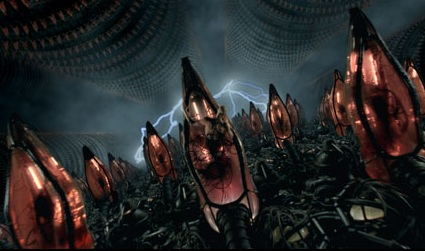 I do not believe it is simply coincidence that we are currently going from the Piscean Age — symbolized by fish in water — to the Aquarian Age — symbolized by a water bearer. This change was a big part of the consciousness during the Sixties,
I do not believe it is simply coincidence that we are currently going from the Piscean Age — symbolized by fish in water — to the Aquarian Age — symbolized by a water bearer. This change was a big part of the consciousness during the Sixties,  and I think we are beginning to see why: Going from a state where one is oblivious to the forces around one to a state where one can see the things one is dealing with (carrying the water) is no small thing.
and I think we are beginning to see why: Going from a state where one is oblivious to the forces around one to a state where one can see the things one is dealing with (carrying the water) is no small thing.
 It seems everything about evolution in humans has something to do with being between two mediums and the advance/the added perspective that comes with that,
It seems everything about evolution in humans has something to do with being between two mediums and the advance/the added perspective that comes with that,  going all the way back to being the only ape to take to the water so much as to become partly aquatic—placing our species between water and land, halfway between a dolphin and a chimpanzee. I think we are heading toward being like the fairies and angels we imagine—halfway between land and air—but that is a whole other post.
going all the way back to being the only ape to take to the water so much as to become partly aquatic—placing our species between water and land, halfway between a dolphin and a chimpanzee. I think we are heading toward being like the fairies and angels we imagine—halfway between land and air—but that is a whole other post.
Another analogy I’ve heard of this difference between the two modes of being completely oblivious and somewhat aware of one’s unconscious is that ![nomadic 382[9]](https://apocalypseknow.files.wordpress.com/2012/06/nomadic-3829.jpg?w=454&h=318) between living full-time in an arctic environment where one has to wear a heavy coat versus living in a milder climate. In the warmer climes, one is both aware of what it is like to not have a coat—one has capacity to feel better ways of being—as well as how bulky, obstructing, and uncomfortable it is to have the coat on—suffering
between living full-time in an arctic environment where one has to wear a heavy coat versus living in a milder climate. In the warmer climes, one is both aware of what it is like to not have a coat—one has capacity to feel better ways of being—as well as how bulky, obstructing, and uncomfortable it is to have the coat on—suffering  more from it, suffering from one’s perinatal memories. Finally one is better able to decide when to have it on and not—one has more options.
more from it, suffering from one’s perinatal memories. Finally one is better able to decide when to have it on and not—one has more options.  At some point I will discuss what this has to do with the increase of bipolar disorders, but not now.
At some point I will discuss what this has to do with the increase of bipolar disorders, but not now.
One analogy I find especially provocative is the difference between watching a movie and being fully engrossed in it so that one does not know it is a movie, which is equivalent to acting out unconsciously from one’s early imprints. Compare this to watching the same movie with equal interest, but being aware that one is in a theater. You can see where in the second instance one would feel there are more options; and one would feel that one could step back before finding oneself caught up in horrific actions.
Wounded Deer and Centaurs

 However, being aware of one’s discomfort (having “more access” to the perinatal), one suffers like the wounded deer—the innocent who feels things and so struggles with society’s sickness that many others are unconsciously perpetrating. But, with time and success in handling this pain, one can become the wounded healer—the Centaur.
However, being aware of one’s discomfort (having “more access” to the perinatal), one suffers like the wounded deer—the innocent who feels things and so struggles with society’s sickness that many others are unconsciously perpetrating. But, with time and success in handling this pain, one can become the wounded healer—the Centaur.
 Now, why and how would this occur? As I’ve said, some access to the perinatal and more blatant and direct acting it out is exhibited by many of the baby-boomer generation. This is in large part due to their having been raised in a way that required less in the way of ego defenses to keep their primal pain suppressed. Psychohistorians like Glen Davis and Lloyd deMause have detailed a slow advance of child-caring techniques, with generations since the WWII Generation being raised with more attention to their needs and less harshness and cruelty…increasingly more love.
Now, why and how would this occur? As I’ve said, some access to the perinatal and more blatant and direct acting it out is exhibited by many of the baby-boomer generation. This is in large part due to their having been raised in a way that required less in the way of ego defenses to keep their primal pain suppressed. Psychohistorians like Glen Davis and Lloyd deMause have detailed a slow advance of child-caring techniques, with generations since the WWII Generation being raised with more attention to their needs and less harshness and cruelty…increasingly more love.
“What the World Needs Now, Is…”
 Before anyone begins thinking “permissive” or “spare the rod, spoil the child,” let me point out that I will be continually stressing how this development is not only a good thing (why wouldn’t love be good?)
Before anyone begins thinking “permissive” or “spare the rod, spoil the child,” let me point out that I will be continually stressing how this development is not only a good thing (why wouldn’t love be good?) but is one of the few sources of hope for our future we really do have.
but is one of the few sources of hope for our future we really do have.
For less childhood pain and trauma means one is stronger and more able to face the even deeper perinatal pain.
Choosing Lesser Evils
 At any rate, the extreme acting-out and total dissociation from the perinatal exhibited by the World-War-Two Generation was followed, in the generations coming after, by less relative dissociation and less horrific forms of acting it out. Quite simply, generations as a whole had better ability to refrain from the more blatantly evil act outs—wholesale murders and world wars, pogroms and genocide,
At any rate, the extreme acting-out and total dissociation from the perinatal exhibited by the World-War-Two Generation was followed, in the generations coming after, by less relative dissociation and less horrific forms of acting it out. Quite simply, generations as a whole had better ability to refrain from the more blatantly evil act outs—wholesale murders and world wars, pogroms and genocide,
 inquisitions and witch-burning, racism and slavery. They were more able to choose seemingly milder forms of suffering and self-destruction — polluting the atmosphere, water, and food; population explosions and crowding of cities; and traffic jams.
inquisitions and witch-burning, racism and slavery. They were more able to choose seemingly milder forms of suffering and self-destruction — polluting the atmosphere, water, and food; population explosions and crowding of cities; and traffic jams.
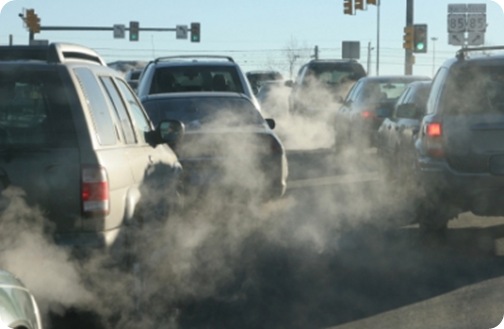 The common everyday traffic jam is especially instructive of perinatal dynamics as traffic congestions replicate asphalt birth tunnels where one not only breathes exhaust fumes from trucks and other autos—fetal malnutrition—but also can become gridlock at any moment, thus re-creating the intense frustration and no-exit hopelessness, and rage, of BPM II.
The common everyday traffic jam is especially instructive of perinatal dynamics as traffic congestions replicate asphalt birth tunnels where one not only breathes exhaust fumes from trucks and other autos—fetal malnutrition—but also can become gridlock at any moment, thus re-creating the intense frustration and no-exit hopelessness, and rage, of BPM II.
Baby-Boomer Perinatal Awareness
Other examples of the scenery of modern times where the perinatal is manifesting but is less projected onto another:
We Know THAT We Don’t Know…We Could Be Wrong.
 Many baby-boomers had enough access to their perinatal underbellies to question the absolute rightness of the Vietnam War and so they campaigned against it. This is indicative of closeness to the perinatal because it shows an ability to doubt one’s egocentric defenses—as given by society and family of origin—and to look at situations from the eyes of the Other.
Many baby-boomers had enough access to their perinatal underbellies to question the absolute rightness of the Vietnam War and so they campaigned against it. This is indicative of closeness to the perinatal because it shows an ability to doubt one’s egocentric defenses—as given by society and family of origin—and to look at situations from the eyes of the Other.
 So much was this evident in boomers that some were even able
So much was this evident in boomers that some were even able  to see the Vietnam War through the eyes of the enemy—exemplified by Jane Fonda’s trip to Hanoi, the waving of North Vietnamese flags at demonstrations, and the carrying of little red books of the sayings of Chairman Mao tse Tung.
to see the Vietnam War through the eyes of the enemy—exemplified by Jane Fonda’s trip to Hanoi, the waving of North Vietnamese flags at demonstrations, and the carrying of little red books of the sayings of Chairman Mao tse Tung.
But It’s Clear You’re Wrong.
 The baby-boomer—or Sixties—generation also indicate their closeness to their perinatal in their campaigns against some of the act-outs of the perinatal mentioned above: These include actions against pollution; a rejection of city life, with its gridlocks, pollution, and crowding , and a return to the country, in communes or otherwise; an awareness and rejection of polluted foods and creation of a natural and organic foods movement; and actions against global overpopulation including support for birth control, a pro-choice stance on abortion, and delaying of baby-making on their own parts along with a reduction in the size of their families.
The baby-boomer—or Sixties—generation also indicate their closeness to their perinatal in their campaigns against some of the act-outs of the perinatal mentioned above: These include actions against pollution; a rejection of city life, with its gridlocks, pollution, and crowding , and a return to the country, in communes or otherwise; an awareness and rejection of polluted foods and creation of a natural and organic foods movement; and actions against global overpopulation including support for birth control, a pro-choice stance on abortion, and delaying of baby-making on their own parts along with a reduction in the size of their families.
The sexual excess that is characteristic of the perinatal, specifically BPM III, was evident in boomers’ free love and promiscuous sexual behavior.
 Many more examples could be given. But the proof of their closeness to their unconscious dynamics lies not only in their actions—as mentioned above, in their more blatant acting them out or in their actual actions against the blatant acting out, both of which indicate closer access—but also
Many more examples could be given. But the proof of their closeness to their unconscious dynamics lies not only in their actions—as mentioned above, in their more blatant acting them out or in their actual actions against the blatant acting out, both of which indicate closer access—but also 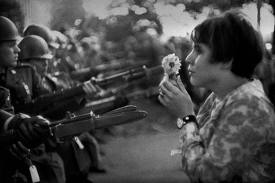 in the study of their unconscious dynamics.
in the study of their unconscious dynamics.  As mentioned in Chapter Twelve, Kenneth Keniston found in his study of the psychodynamics of the Sixties generation when they were in their youth an unusual amount of perinatal symbolism and self-analysis. (See “Raging to Reenter, Digging Under Ground.”)
As mentioned in Chapter Twelve, Kenneth Keniston found in his study of the psychodynamics of the Sixties generation when they were in their youth an unusual amount of perinatal symbolism and self-analysis. (See “Raging to Reenter, Digging Under Ground.”)
Boomer Rage, Perinatally So
We Shall Overcome.
We also see perinatal feelings in the focus of the baby-boomers on empowerment. This word appears to come up in every area of their lives. It can be seen as the natural focus of a generation that feels itself inside to be a helpless fetus facing an overpowering obstruction of a womb.
Hence baby-boomers are of course also closer to the frustration, rebellion, and yes, rage, that is part of the perinatal complex. We saw it exhibited by them in their anger at authority in the Sixties, their rebellion against the Vietnam War.
“Get the &%$ OFF Me!”
 Keep in mind that a huge aspect of the perinatal is feelings of restriction, thus frustration, and, consequently rage against large entities of obstruction—like the womb was in relation to the small and helpless fetus. In doing so, we see that the reason for their rage is simple and understandable.
Keep in mind that a huge aspect of the perinatal is feelings of restriction, thus frustration, and, consequently rage against large entities of obstruction—like the womb was in relation to the small and helpless fetus. In doing so, we see that the reason for their rage is simple and understandable.
Baby-boomers, characterized as being closer to their unconscious, especially the perinatal, have more access to their anger: This means they feel their anger and are less likely to act it out in more hidden, disguised, and dire ways such as war-making, racism, and anti-Semitism.
This does not mean their rage would not be troublesome. The perinatal lets no one get off scot free. We see lots of pre- and perinatal anger coming out in the last few decades in the phenomenon of the “angry electorate.” Let’s look at that next.
You Didn’t Really Believe Elections Had Anything to Do With Issues, Did You? Biting the Feeding Hand … Perinatal Rage and Panicky Electorate
Seriously? You Actually Think Elections Have Something to Do With Issues? Biting the Feeding Hand … Perinatal Rage and Panicky Electorate
More recently these baby-boomers have been coming into the triumphant phase of their lives. They make up the largest sector of the electorate, and their influence is reflected more as they come into positions of power in the media and elsewhere.
The Angry Electorate and Boomers

 But their influence has been diffused and confused because of the anger of some of them. Their irrational rage—combined with the reactionary consciousness of the Fifties Generation, many of the Fifties Gen children of Yuppies-Gen Xers, and the remaining WWII folks—has most often skewed election results against the Boomers interests and their true desires. Though not the majority of boomers, enough of them expressed their rage to swing election results in favor of the other side.
But their influence has been diffused and confused because of the anger of some of them. Their irrational rage—combined with the reactionary consciousness of the Fifties Generation, many of the Fifties Gen children of Yuppies-Gen Xers, and the remaining WWII folks—has most often skewed election results against the Boomers interests and their true desires. Though not the majority of boomers, enough of them expressed their rage to swing election results in favor of the other side.
1992 – “Mad as Hell”
Beginning in the 1992 and 1994 national elections, these baby-boomers exhibited their perinatal influences in contributing to the totally unexpected phenomenon of the “angry electorate.”

 At the time, pundits and media analysts were at a total loss to explain the rage of the electorate that was affecting these elections. In 1992, they were totally surprised by the showing of three men in particular—Jerry Brown, Pat Buchanan, and Ross Perot—who seemed to have one thing in common: the angry tones and rebelliousness that characterized their speeches, as compared to others. [Footnote 4]
At the time, pundits and media analysts were at a total loss to explain the rage of the electorate that was affecting these elections. In 1992, they were totally surprised by the showing of three men in particular—Jerry Brown, Pat Buchanan, and Ross Perot—who seemed to have one thing in common: the angry tones and rebelliousness that characterized their speeches, as compared to others. [Footnote 4]
 The demeanor of these candidates was at such odds with the other candidates that when Bill Clinton one night responded angrily to a comment by Jerry Brown about Hillary, Clinton’s wife, it was that part of the debate—of Clinton being angry, all issues aside—that made the news that night!
The demeanor of these candidates was at such odds with the other candidates that when Bill Clinton one night responded angrily to a comment by Jerry Brown about Hillary, Clinton’s wife, it was that part of the debate—of Clinton being angry, all issues aside—that made the news that night!
Though the rage of the electorate in 1992 caused the Brown, Perot, and Buchanan phenomena, it was split among them, so Clinton ended up winning.  This of course was also OK with the baby-boomers in that (1) Clinton and Gore were baby-boomers like themselves and (2) in the race against Bush, Clinton was the challenger, and thus the rebel; and Bush was the “bum to be thrown out.”
This of course was also OK with the baby-boomers in that (1) Clinton and Gore were baby-boomers like themselves and (2) in the race against Bush, Clinton was the challenger, and thus the rebel; and Bush was the “bum to be thrown out.”
However, this rage did not go away after the election, which highlights its having perinatal origins. In fact, after the shortest “honeymoon period” in history, by some accounts, it became directed at the most likely target/center—the President, Bill Clinton, himself.
We all know how despite the successes and progress of Clinton’s first year, he was especially singled out for ridicule and denigration by the media. He could not seem to do anything right, and the most incredibly outrageous behaviors were attributed to him.
1994 – “Throw the Bums Out … Again.”
 This rage spilled over into the next year and, sure enough, during the midterm election—the issues be damned—the angry electorate was in a mood to “throw the bums out” again. It did not matter the party….I do not claim that all those of my generation are always as politically astute as they are angry.
This rage spilled over into the next year and, sure enough, during the midterm election—the issues be damned—the angry electorate was in a mood to “throw the bums out” again. It did not matter the party….I do not claim that all those of my generation are always as politically astute as they are angry.
The Republicans called it a “revolution.” It was simply the acting out of an electorate in the throes of perinatal feelings—that is, feelings of frustration,  being “tied up” by red tape, an inability to go forward…that is, up the economic ladder—wages had been stagnating since the early 80s…being overcontrolled and pushed around by regulations…big government being the big mother womb keeping the fetus locked in and unable to move…and out of all this, the consequent anger and rage.
being “tied up” by red tape, an inability to go forward…that is, up the economic ladder—wages had been stagnating since the early 80s…being overcontrolled and pushed around by regulations…big government being the big mother womb keeping the fetus locked in and unable to move…and out of all this, the consequent anger and rage.
1996 and 1998 — “To Hell With You!”
 At any rate, succeeding elections bear out this analysis of an angry electorate. In 1996, despite the much ballyhooed “Republican Revolution,” sure enough, the electorate was spoiling to “throw the bums out” again—only this time it was the Republican Congress.
At any rate, succeeding elections bear out this analysis of an angry electorate. In 1996, despite the much ballyhooed “Republican Revolution,” sure enough, the electorate was spoiling to “throw the bums out” again—only this time it was the Republican Congress.  So there were Democratic gains at the time.
So there were Democratic gains at the time.
And in 1998, when everything pointed to a huge Republican landslide because of the Lewinsky scandal, the electorate again showed their rebellion and anger toward both the pundits and the Republicans who had been lambasting them with details of the scandal for nearly a year by giving the Democrats gains again! [Footnote 4]
2006, 2008, and 2010 — Panicky Electorate
In 2006, 2008, and 2010, it was an angry electorate reeling against oppression; and in the case of 2010, doing it mindlessly, against their own interests. If there were not perinatal charge to all this, Americans would not be so irrational about their choices.
Perinatal Rage
People have had good reasons to feel oppressed since the Eighties when Reagan began the giveaways to the rich and the budget cutbacks, continuing to this day, that have caused the masses to feel constricted and oppressed.
Yet, if this did not result in their being perinatally overloaded so that they cannot reason, they would not have been able to be led to fight their own interests as they were in 2010 and in an ongoing way as exemplified by the Tea Party and the success of right-wing agendas.
Reacting, Too Angry and Confused to Think
 Another aspect of this irrationality on both sides of the political spectrum has to do with this idea that there is no difference between the two major parties. Feeling oppressed perinatally is characterized by a pressure from all sides simultaneously.
Another aspect of this irrationality on both sides of the political spectrum has to do with this idea that there is no difference between the two major parties. Feeling oppressed perinatally is characterized by a pressure from all sides simultaneously.  There is an inability to distinguish or discriminate between forces that are helpful and those that are dire, as any and all developments seem threatening in situations of crisis. In a situation of overwhelm, further, there is an inability to think clearly. One just fights back, explodes, reacts. It’s no coincidence that righties are called reactionaries.
There is an inability to distinguish or discriminate between forces that are helpful and those that are dire, as any and all developments seem threatening in situations of crisis. In a situation of overwhelm, further, there is an inability to think clearly. One just fights back, explodes, reacts. It’s no coincidence that righties are called reactionaries.
Biting the Feeding Hand
 The upshot is an inability, under the pressure of perinatal feelings, provoked endlessly by actual oppression economically, environmentally, socially, and culturally, to rail against any authority, to bite the hand that feeds one. This is exactly like the panicked swimmer who in danger of drowning fights off his or her rescuer.
The upshot is an inability, under the pressure of perinatal feelings, provoked endlessly by actual oppression economically, environmentally, socially, and culturally, to rail against any authority, to bite the hand that feeds one. This is exactly like the panicked swimmer who in danger of drowning fights off his or her rescuer.
Can anyone at this point still maintain that the politics of the last few decades had anything at all to do with ideology or issues?
Millennials and Their Opposites – Fifties Generation Tea Partyers … How OWS and Tea Party Movements Are Generationally and Perinatally Different
Millennial Gen Occupiers and Eisenhower Gen Tea Partyers Are Perinatally As Well As Generationally Opposed
Right-Wing “Hate Groups,” the Tea Party, and the Fifties Generation: Perinatally Oblivious
![clip_image004[5] clip_image004[5]](https://apocalypseknow.files.wordpress.com/2012/06/clip_image0045.jpg?w=212&h=276)
 One might also note the rise of “hate groups” occurring at the same time as the phenomenon of the angry electorate. Hate groups fill their ranks from folks on the extreme right and their actions are exemplified in the Oklahoma bombing tragedy and more recently in the Tea Party.
One might also note the rise of “hate groups” occurring at the same time as the phenomenon of the angry electorate. Hate groups fill their ranks from folks on the extreme right and their actions are exemplified in the Oklahoma bombing tragedy and more recently in the Tea Party.
Perinatally Clueless
But notice again then that these hate groups are always on the extreme right of the political spectrum and thus exemplify a World-War-Two mindset in relation to their perinatal unconscious: Specifically, the mindset is one of being completely cut off from one’s unconscious dynamics and being in total denial of unconscious motivations so that one can have the complete certitude—lacking any access to the unconscious which would give rise to doubts—that makes violent actions possible.
![clip_image007[4] clip_image007[4]](https://apocalypseknow.files.wordpress.com/2012/06/clip_image0074_thumb.jpg?w=277&h=233) However the reason for bringing up the hate groups is to show how much their actions as well are dominated by
However the reason for bringing up the hate groups is to show how much their actions as well are dominated by  perinatal—in their case, totally unconscious—dynamics.
perinatal—in their case, totally unconscious—dynamics.
For without exception their reasons for rising up against the government—representing the overwhelming womb—has to do with frustrations, like the trapped fetus feels, in regards to “oppressive” taxes, governmental red tape, laws, and other regulations that they feel restrict their freedom…to move freely, as one wanted to but couldn’t, in the womb.
 Tea Party and hate group ranks are prevalent with Fifties Generation folks. The Eisenhower Generation — after the WWII Gen and before Boomers — were born just before or during WWII. They are mired in prenatal fears coming from the fact that their parents were living through such distressing times as WWII and the Great Depression when they were
Tea Party and hate group ranks are prevalent with Fifties Generation folks. The Eisenhower Generation — after the WWII Gen and before Boomers — were born just before or during WWII. They are mired in prenatal fears coming from the fact that their parents were living through such distressing times as WWII and the Great Depression when they were  inside their mothers. They were “marinated” in the womb with fear and insecurity. They also were not brought up with the societal advance in child-rearing the next generation of boomers, and those afterward, would be granted. So it is understandable they would be both cut off from perinatal access yet full of perinatal pushes and pulls to act out in confused and self-destructive ways.
inside their mothers. They were “marinated” in the womb with fear and insecurity. They also were not brought up with the societal advance in child-rearing the next generation of boomers, and those afterward, would be granted. So it is understandable they would be both cut off from perinatal access yet full of perinatal pushes and pulls to act out in confused and self-destructive ways.
Perinatal Access of Millennials
Being Boomer Kids, Wouldn’t You Kind of Expect That?
Now on the other end of this perinatal spectrum we have the most recent generational cohort to be making a mark. The Millennial, or Baby-Boomer Echo generation, show the same inner access as their Boomer parents. They demonstrate as well their parents’ consequent refusal to act it out on a larger scale: It has been said that the greatest concerns of those in this generation, now in their twenties and thirties, are the environment and racism-bigotry.
Activist, Progressive
![clip_image001[4] clip_image001[4]](https://apocalypseknow.files.wordpress.com/2012/06/clip_image0014_thumb.png?w=274&h=280) They show the progressive bent of their parents, also, in their having a lot to do with giving America its first African-American president. And to the environment and minority rights, we need to add classism, economic fairness, and human rights because of their phenomenal outpouring of support in the past year for Occupy Wall Street and for union rights in Wisconsin and other states. They are showing global strength in opposing fascism, economic injustice, political oppression, and human rights abuses in Occupy and Arab Spring movements. They’ve filled massive demonstrations against the draconian economic policies of Republicans in Wisconsin.
They show the progressive bent of their parents, also, in their having a lot to do with giving America its first African-American president. And to the environment and minority rights, we need to add classism, economic fairness, and human rights because of their phenomenal outpouring of support in the past year for Occupy Wall Street and for union rights in Wisconsin and other states. They are showing global strength in opposing fascism, economic injustice, political oppression, and human rights abuses in Occupy and Arab Spring movements. They’ve filled massive demonstrations against the draconian economic policies of Republicans in Wisconsin.
Climate Change and The Environment
We know how pollution and action against pollution indicates a closeness to one’s perinatal. To put it another way, it is clear that only a total denial and disconnect between one’s consciousness and one’s unconscious perinatal dynamics would allow one to act it out unconsciously in the creation of pollution and in the denial of it as a problem or a mindless neglect of it. So the fact that these Baby-Boomer children, the Millennials, are so cognizant, concerned, and active in relation to global pollution and climate change shows their lack of denial of this perinatal act-out.
Multicultural, Resisting Racism and Oppression
But what of racism and bigotry? How is this an indication of a closeness to the perinatal. There are several ways in which this is so. As mentioned, a closeness to the perinatal allows one to doubt one’s given defenses and to glimpse alternate perspectives—in particular to look at things from the eyes of The Other.
 In this way, the baby-boomer echo generation are able to see oppression, injustice, and unfairness as it is played out in the lives of minorities who don’t share their (predominantly) middle-class advantages. They simply don’t “get” racism, sexism, or bigotry of any kind; it is incomprehensible to them. They strongly oppose imperialism, colonialism, or oppression of any kind. Relatedly, they support animal rights and oppose animal abuse and cruelty. They don’t understand torture and violence against fellow planetmates.
In this way, the baby-boomer echo generation are able to see oppression, injustice, and unfairness as it is played out in the lives of minorities who don’t share their (predominantly) middle-class advantages. They simply don’t “get” racism, sexism, or bigotry of any kind; it is incomprehensible to them. They strongly oppose imperialism, colonialism, or oppression of any kind. Relatedly, they support animal rights and oppose animal abuse and cruelty. They don’t understand torture and violence against fellow planetmates.
![clip_image002[4] clip_image002[4]](https://apocalypseknow.files.wordpress.com/2012/06/clip_image0024.jpg?w=321&h=321) Naturally they were helped in that awareness by the gains of previous decades, beginning in the Sixties, which had them growing up with diversity of racial and ethnic heritages—seeing things multiculturally not narrowly—in their schools and in the omnipresent media. They grew up with the environmental awareness that was set in motion in the Sixties; they don’t know of a world before recycling and energy conservation. Activism, demonstrations, and political action have been a part of their lives since they were born, unlike the several generations that preceded them and even their Boomer parents who grew up in a politically castrated Fifties.
Naturally they were helped in that awareness by the gains of previous decades, beginning in the Sixties, which had them growing up with diversity of racial and ethnic heritages—seeing things multiculturally not narrowly—in their schools and in the omnipresent media. They grew up with the environmental awareness that was set in motion in the Sixties; they don’t know of a world before recycling and energy conservation. Activism, demonstrations, and political action have been a part of their lives since they were born, unlike the several generations that preceded them and even their Boomer parents who grew up in a politically castrated Fifties.
But there is another, stronger element. This is the factor of oppression and unfairness itself. We experience compression (oppression), and frustration at our attempts to go forward, and what feels like hopeless unfairness and injustice, when in the throes of BPM II birth trauma. To see these facets of the fates of minorities, as in racism, or gender or sexual bias, points to this echo generation’s closeness to their own perinatal oppression; hence their ability to empathize with oppressed minorities.
This ability to realistically sense and respond to oppression is also the reason they would throw themselves in heartily in defense of unions, an increasingly oppressed middle class, and public sector employees.
Of Goths, Gen X, Anti-Abortionists, Pacifiers, and a Hierarchy of Healing … You Make It When You DON’T Fake It
Flaunting One’s Sickness Is Healthier Than Hiding It … Gen X, Goths, Pacifiers, and The Hierarchy of Healing
A Hierarchy of Healing?
This idea that those close to their unconscious conflicts are more likely to act them out blatantly goes completely against one of DeMause’s tenets. He wrote, “The higher the psychogenic mode of the psychoclass, the less it is necessary for it to act out its conflicts.” [Footnote 5]
However this is exactly the crux of my difference with his theory and is a  central point I am making. For from my perspective, the higher the mode of child-caring equals the less the defenses. Hence, the more it is likely that that generation’s conflicts will be close to the surface, seeking resolution … like Maslow’s hierarchy of needs theory. We might want to call it a hierarchy of healing theory. [Footnote 6]
central point I am making. For from my perspective, the higher the mode of child-caring equals the less the defenses. Hence, the more it is likely that that generation’s conflicts will be close to the surface, seeking resolution … like Maslow’s hierarchy of needs theory. We might want to call it a hierarchy of healing theory. [Footnote 6]
 In other words, our observing the supposed “acting out” of an underlying trauma does not mean that the group or person in question is actually or, at least completely, “acting it out” and defending against it. It may be that that group is resolving, healing, or integrating it—taking it inward rather than acting it out…in the world, on others…whether to a small or great extent.
In other words, our observing the supposed “acting out” of an underlying trauma does not mean that the group or person in question is actually or, at least completely, “acting it out” and defending against it. It may be that that group is resolving, healing, or integrating it—taking it inward rather than acting it out…in the world, on others…whether to a small or great extent.  Using the analogy of Pandora’s Jar, described earlier, they are opening the jar, at least a little. And I disagree with deMause in that I wish to stress that it is healthier by far to do that. Let me explain:
Using the analogy of Pandora’s Jar, described earlier, they are opening the jar, at least a little. And I disagree with deMause in that I wish to stress that it is healthier by far to do that. Let me explain:
The difference between acting out and resolving is whether the actions are done in total dissociation from the unconscious dynamics, that is to say, in a trance state—as explained earlier in regard to the World War Two generation and the Tea Party—or whether there is at least a modicum of insight into it occurring as a result of things inside of oneself, not completely projected onto the outside.
 The attitude that leads to total dissociation and acting out was expressed in a recent 2012 military movie, Act of Valor, which depicted Navy Seals engaged in anti-terrorism activity. At the end, the manner of dealing with pain recommended for these American soldiers and “men of valor” was to (paraphrasing) put all the pain in a box, shut it tight, press it down till it is smaller and smaller, and never, under any circumstances, let it out!
The attitude that leads to total dissociation and acting out was expressed in a recent 2012 military movie, Act of Valor, which depicted Navy Seals engaged in anti-terrorism activity. At the end, the manner of dealing with pain recommended for these American soldiers and “men of valor” was to (paraphrasing) put all the pain in a box, shut it tight, press it down till it is smaller and smaller, and never, under any circumstances, let it out!
 However, in non-acting-out—“acting inward” or taking back the projection—there is a tad of insight, as, for example, in the “overexamined life” of the “uncommitted” and the “self-analysis” of the young radicals of the Sixties generation. Similarly, the rock concert revivication of all current generations except the Fifties and WWII ones, as I’ve mentioned, is
However, in non-acting-out—“acting inward” or taking back the projection—there is a tad of insight, as, for example, in the “overexamined life” of the “uncommitted” and the “self-analysis” of the young radicals of the Sixties generation. Similarly, the rock concert revivication of all current generations except the Fifties and WWII ones, as I’ve mentioned, is 
 about personal experience and growth, and it is not about acting out on another; whereas an example of the extreme other end of that would be engaging, trance-like, in a mass killing against a perceived political enemy, as Loughner did, and as we do as nations in wars.
about personal experience and growth, and it is not about acting out on another; whereas an example of the extreme other end of that would be engaging, trance-like, in a mass killing against a perceived political enemy, as Loughner did, and as we do as nations in wars.
Another example of complete dissociation are the anti-abortion folks. They don’t have a clue of the connection between their own unconscious prenatal pain and the feelings they have about unborn others. They are not wrestling with their feelings, they are trying to change the world to conform to their defenses around those feelings—that is, they want the world to suppress that womb time out of existence like they have done to it in their own minds. The proof that it is acting out is that it is all about changing others’ behavior, and it involves imposing one’s inner pain on others forcefully and aggressively—which we have seen in its extreme form with the murders of physicians committed by anti-abortionists
Flaunting One’s Sickness Beats Hiding It—Generation X
The self-analysis of the Sixties Generation was followed by a different mode of struggling with perinatal pain by Generation X, which continues in abated form with the Millennial Generation.  It was manifest rather strikingly with the Goth phenomenon and the vampire fascination that began in the Eighties, coincident with Gen X’s coming of age. Goth and vampirism show blatant perinatal dynamics that are not unfelt and completely repressed as in dissociation with its trance-state aggression against others. An example of Gen X perinatal acting out of these dynamics in total dissociation and trance state was given above in the anti-abortionists. But Goth and vampire culture show folks feeling and immersed consciously in these pushes and pulls and wrestling with them, trying to work them out as opposed to act them out.
It was manifest rather strikingly with the Goth phenomenon and the vampire fascination that began in the Eighties, coincident with Gen X’s coming of age. Goth and vampirism show blatant perinatal dynamics that are not unfelt and completely repressed as in dissociation with its trance-state aggression against others. An example of Gen X perinatal acting out of these dynamics in total dissociation and trance state was given above in the anti-abortionists. But Goth and vampire culture show folks feeling and immersed consciously in these pushes and pulls and wrestling with them, trying to work them out as opposed to act them out.
Hey, It Was Tough!
This is rather clearly shown in looking at the “regression” in Europe, described by psychohistorians, which occurred in the Nineties. This behavior showed a bit of insight…and resolution happening…in that the baby song being hummed was about the very real hardships of being a baby. Therefore, an actual truth about their own lives was being faced there by those singing along with it. The song was not being used to deny or defend against those traumas.
One might suspect that as well in carrying around such blatant examples of regression as a pacifier. For  someone in a more defended mode would be highly threatened by such an obvious symbol that they are really needy children inside. More defended folks would be terrified such overt behavior would make them look wussy or sissified—that is, look like that vulnerable, frightened baby that they
someone in a more defended mode would be highly threatened by such an obvious symbol that they are really needy children inside. More defended folks would be terrified such overt behavior would make them look wussy or sissified—that is, look like that vulnerable, frightened baby that they  really feel themselves to be but are doing their damnedest to hide from everyone. Imagine how those Navy Seals described above would feel walking around sucking on a pacifier, for example.
really feel themselves to be but are doing their damnedest to hide from everyone. Imagine how those Navy Seals described above would feel walking around sucking on a pacifier, for example.
So in actually carrying around a pacifier these youth were not only displaying an insight into their feelings of sometimes being needy babies, on the inside, but  are actually flaunting this awareness, as if to shame, or slap the face of, or be “in the face” of a generation of their parents—the Fifties Generation for the most part—who did not see their needs when they were babies—however effortfully and obviously they sought to demonstrate them. Thus the symbols needed to become more and more shocking and obvious.
are actually flaunting this awareness, as if to shame, or slap the face of, or be “in the face” of a generation of their parents—the Fifties Generation for the most part—who did not see their needs when they were babies—however effortfully and obviously they sought to demonstrate them. Thus the symbols needed to become more and more shocking and obvious.
Look at What You Did to Me!
For example: the jeans with requisite holes around the knees was screaming out, “You did not take care of me; you made me feel like a poor, orphaned, ragamuffin child.”
The piercing of mouths, nose, ears, and even tongues shouted,
“
I am in pain, dammit! Can’t you see that when you stick needles in me as a little baby that I hurt? How can you be so insensitive? Can’t you see that when you refuse to breastfeed and thus nurture me orally that I am forever damaged there, ever painful there? What does it take, my sticking pins—safety pins make the point even more that it was when I was in diapers—in myself to make you see that I hurt there?”
 And, of course, the black clothes, the hideous macabre makeup, and depressed, sullen expressions was exclaiming,
And, of course, the black clothes, the hideous macabre makeup, and depressed, sullen expressions was exclaiming,
“Look, you might think we’re a wonderful family and everything is hunky-dory here; but I wish I were dead! I’ve felt so much pain, from in the womb, at birth, and right after birth, that I wish I’d never been born.
“Also, somehow in courting death, I have the feeling
that I might somehow be reborn again into a good life, not like this place of torture and tears, right from the beginning, where my welcome into the world consisted of being drugged, handled like an object or piece of meat, blasted by bright lights, scrubbed by rough cloths, having needles and suctions stuck in me, blasted with noise, made to lie on cold stainless steel surfaces, and then bundled like a tamale so that I could not move…making me feel again
like I was back in the hellish womb where in the later stages, for a time that felt like an eternity, I felt unable to move and was suffocating for lack of sufficient oxygen…and the only action that was possible was for me to scream my bloody head off for long periods of time or go into a stupor—which is what I did, alternating between them.
“Can’t you see that I’d rather be dead than live in such a world of insensitive zombies like you. Hell, in fact, to
further drive the point home, I’ll even look and act like a zombie, I’ll try to appear as unfeeling and morose as you all seemed to me, especially at my birth. And I’ll go a step further and mirror yourselves back to you by becoming enamored of vampires….
“Can’t you see that you sucked my very life force, my blood, and turned me into an unfeeling vampire like you, by suffocating me in the womb, poisoning me with your toxic blood which you both sucked from me and then forced down my throat!”
The Consciousness Revolution They Don’t Want You to Notice. It’s Inconvenient for Them, Initially Hard for Us, and Hopefully Not Too Late
The “Inconvenient” Revolution – Unacknowledged Consciousness Evolution from the WWII Generation to the Millennials … More Suffering, Less Killing
Different Levels, Different Defenses

 It is instructive at this time to note that Arthur Janov once compared the defenses that characterized the youth of the time—the late Sixties, early Seventies—with those of their parents and older people in general and came up with findings that amplify my own assertions here.
It is instructive at this time to note that Arthur Janov once compared the defenses that characterized the youth of the time—the late Sixties, early Seventies—with those of their parents and older people in general and came up with findings that amplify my own assertions here.
“Mind’s Made Up, Don’t Confuse Me With the Facts!”
Specifically, Janov found that older people—clients of his as well as others of whom he was aware—were characteristically more repressed, more split off,  more prone to dissociation, more defended and, most importantly for our uses here, tended to use defenses of denial and obfuscation against inner information and impulses. Correspondingly, they tended to use drugs that repressed and blotted out reality, such as alcohol and nicotine; and they tended to be sexually repressed. They were also more compulsive. They tended to suppress their tension and hold it in for all their worth.
more prone to dissociation, more defended and, most importantly for our uses here, tended to use defenses of denial and obfuscation against inner information and impulses. Correspondingly, they tended to use drugs that repressed and blotted out reality, such as alcohol and nicotine; and they tended to be sexually repressed. They were also more compulsive. They tended to suppress their tension and hold it in for all their worth.
“How Can You Have Any Pudding if You Don’t Eat Your Meat?”
Truth was greatly feared, and all attempts were made to fend off incoming information that might threaten the delusional reality set of the conscious mind. This left them open to the characterization: “My mind’s made up! Don’t confuse me with the facts!” which was leveled at them by anti-Vietnam War protesters. In more recent years, it is no wonder they have engaged in a war against education and against Hollywood, as really they are at war with new information. Consequently, Janov found that the dominant mode of reaction, when threatened, was to act out aggressively against the supposed “oppressor.” Like prenates up against an overpowering womb, they are in constant war with overwhelm.
“Peace, Out.”
 On the other hand, he found that his youthful clients—under 30—tended to use defenses of excess, release, and addiction, or to be unusually lacking in defense mechanisms. They were more impulsive. They tended to have weak barriers to incoming information, to be open to negative unconscious content, even at the expense of their self-esteem, and to be tension expressers. They were therefore more likely sexually promiscuous than repressed, and they tended to drugs that opened them to information and unconscious knowledge – such as
On the other hand, he found that his youthful clients—under 30—tended to use defenses of excess, release, and addiction, or to be unusually lacking in defense mechanisms. They were more impulsive. They tended to have weak barriers to incoming information, to be open to negative unconscious content, even at the expense of their self-esteem, and to be tension expressers. They were therefore more likely sexually promiscuous than repressed, and they tended to drugs that opened them to information and unconscious knowledge – such as  marijuana and LSD.
marijuana and LSD.
Consequently they were less split off from their unconscious truth…though it made them uncomfortable…were less repressed, and, if anything, used defenses of masochism, self-denial, and self-inflicted aggression or depression. Truth was more important to them than emotional comfort. They tended to go out of their way to dig up negative information about themselves, and they accepted the low self-esteem and sense of self-worth that came with that kind of openness to truth.

 Their delusional reality set — if it could be called that — entailed taking on the worries and cares of the world as their own, since their openness to their own cares and worries allowed them to empathize with others in obviously
Their delusional reality set — if it could be called that — entailed taking on the worries and cares of the world as their own, since their openness to their own cares and worries allowed them to empathize with others in obviously 
 similar situations. When triggered into their pain, their dominant reaction was to take it inward and to take it out on themselves causing depression. In doing so they showed they would rather hurt themselves than hurt another.
similar situations. When triggered into their pain, their dominant reaction was to take it inward and to take it out on themselves causing depression. In doing so they showed they would rather hurt themselves than hurt another.
Generation Gaps … Again

 I don’t believe you need to be a rocket scientist to see that Janov was discovering an historical — one might say millennial — ”changing of the guard” as regards access to the unconscious, openness to personal truth, and lessening of the tendency to act out early trauma in
I don’t believe you need to be a rocket scientist to see that Janov was discovering an historical — one might say millennial — ”changing of the guard” as regards access to the unconscious, openness to personal truth, and lessening of the tendency to act out early trauma in 
 violent or belligerent ways. The older generation had more tendencies to blame others, to find scapegoats for their ills, and to act out violently on them. The younger generation had more tendencies to look inward and to blame and punish themselves … and to prefer to hurt themselves before hurting another. They would more likely cut themselves than cut another; they would more likely commit suicide than kill.
violent or belligerent ways. The older generation had more tendencies to blame others, to find scapegoats for their ills, and to act out violently on them. The younger generation had more tendencies to look inward and to blame and punish themselves … and to prefer to hurt themselves before hurting another. They would more likely cut themselves than cut another; they would more likely commit suicide than kill.
The youthful generation might also become alcoholic, addicted to drugs, or do something else to injure themselves…rather than act it out on another.
Less Wars, More Suicides

 And this “acting in,” as opposed to acting out, is indicated as well in the rise of teen suicides in recent decades. So you might say that the tradeoff we are currently getting is a reduction in the use of wars and racism to solve problems—that is, a reduction in the tendency to act out one’s Pain on others and to scapegoat. But, since the perinatal trauma is still there, and one is even more conscious of it, we have increased suicides. We have not had a world war or dropped a nuclear weapon on people since World War II; but we suffer unceasingly from relatively less loss of life in regional conflicts and the self-inflicted harm of air, water, and food contamination and from radiation poisoning from nuclear power plants. We have not had millions killed in genocides or purges since World War II, but we have suffered lesser loss of life in uprisings for democracy in China, Iran, Syria, Southeast Asia, and the Arab world. We have not had lynchings and racial riots have ceased, but we have suffered less lethal damage from culture and class wars, increased incarceration, creeping fascism, and struggles for economic justice.
And this “acting in,” as opposed to acting out, is indicated as well in the rise of teen suicides in recent decades. So you might say that the tradeoff we are currently getting is a reduction in the use of wars and racism to solve problems—that is, a reduction in the tendency to act out one’s Pain on others and to scapegoat. But, since the perinatal trauma is still there, and one is even more conscious of it, we have increased suicides. We have not had a world war or dropped a nuclear weapon on people since World War II; but we suffer unceasingly from relatively less loss of life in regional conflicts and the self-inflicted harm of air, water, and food contamination and from radiation poisoning from nuclear power plants. We have not had millions killed in genocides or purges since World War II, but we have suffered lesser loss of life in uprisings for democracy in China, Iran, Syria, Southeast Asia, and the Arab world. We have not had lynchings and racial riots have ceased, but we have suffered less lethal damage from culture and class wars, increased incarceration, creeping fascism, and struggles for economic justice.
Overall then, less death, more suffering. Less killing in wars, more suicides. Less large scale atrocities, more depression. On a collective level, we are taking our conflicts increasingly inward.
As deMause pointed out,
Those considered ‘neurotic’ in each age may often be a higher psychogenic mode than those considered ‘normal,’ only they must stand the anxiety of not sharing the group-fantasies of the age. [Footnote 7]
Away From Hubris: Nature Balances HerSelf
 In this part on healing crisis, we have seen how perinatal acting out can be of two kinds: totally unconscious and trance-like, or semi-conscious with at least some access. We have looked at how a progression to more access to one’s perinatal underbellies has led to more acting in than acting out. We have seen how it has led to less violence and more depression.
In this part on healing crisis, we have seen how perinatal acting out can be of two kinds: totally unconscious and trance-like, or semi-conscious with at least some access. We have looked at how a progression to more access to one’s perinatal underbellies has led to more acting in than acting out. We have seen how it has led to less violence and more depression.
Suffering Beats Dying.
At this point, one could make the point that the tradeoff is worth it: That individuals suffering more emotional pain and trauma is preferable to the horrors of world war and nuclear or genocidal holocaust…put bluntly, suffering beats dying.
 But we are still looking at the situation from the microcosmic scale. We are talking and acting here like we are the only ones on Earth that matter.
But we are still looking at the situation from the microcosmic scale. We are talking and acting here like we are the only ones on Earth that matter.
This is natural of course, in that this is always the way we have thought of things—that is to say, as if all things were to be considered around the concerns of humans. This is called anthropocentrism—a form of species-centrism—in which Homo sapiens is considered the reason for the existence of the rest of the Universe.
 With the Universe as awesomely and unimaginably large as it is, one might wonder at our hubris in our considering things in only this way—that is, from our perspective.
With the Universe as awesomely and unimaginably large as it is, one might wonder at our hubris in our considering things in only this way—that is, from our perspective.
Likewise, with a mind-boggling number of species living or having lived on this planet alone—species numbering in the hundreds of millions, if not trillions—again one might question the validity of choosing the perspective of our species alone in making our analyses.
How ‘Bout We Step Outside?
Yet this is the way we have always done it. And this is the way I have been slanting my perspective so far in this book.
 But now let us do something radically different. Let us walk out of ourselves — figuratively speaking — and seek to stand upon that Archimedean point from which we might view the events currently transpiring.
But now let us do something radically different. Let us walk out of ourselves — figuratively speaking — and seek to stand upon that Archimedean point from which we might view the events currently transpiring.
From such an attempted non-species-centric viewpoint let us view this emerging perinatal unconscious, with its wounded deer and centaurs, as it is currently manifesting in humans. However tenuous our attempt, let us at least try such a new-paradigm viewpoint. For certainly all old-paradigm ones—containing all the hubris of anthropocentrism that they do—have failed in their attempts to save our species and indeed have contributed to such a likelihood.
Let us attempt to see through the eyes of Gaia, now—from the viewpoint of Earth itself—as we look at how the current human predicament may in fact be an example of Nature balancing HerSelf. With both perspectives in mind, we can have a complete picture. We will return then to look at where there is cause for hope, what we are doing wrong as well as where there are positive trends and forces at work, and how we might let go of the self-defeating and instead apply ourselves to fostering the forces of good going on in global consciousness and the globe itself.
Continue with Eden Arise and a Message to All Wounded Deer and Centaurs: It’s a Consciousness Revolution, Aided by Gaia We Are Rediscovering Our Natural Self
Return to We Have Manifested a World That Mirrors and Re-Creates Our Traumatic Human Births: Life or Death Matters We Need to Face to Survive
Footnotes
1. “Zombie” by the Cranberries lyrics:
Another head hangs lowly
Time is slowly taken
And the violence causes silence
Who are we mistaken?
Let he see, it’s not me
It’s not my family
In your head, in your head
They are fightin!
With their tanks, and their bombs
And their bombs, and their guns
In your head, in your head
They are cryin!
In your head! In your head!
Zombie! Zombie! Zombie!
Whats in your head, in your head?
Zombie! Zombie! Zombie!
Another mother’s breaking
Heart is taken over.
When the violence causes silence
We must be mistaken.
It’s the same old theme
Since 1916!
In your head, in your head
They’re still fightin!
With their tanks, and their bombs
And their bombs, and their guns
In your head, in your head!
They are dyin!
In your head! In your head!
Zombie! Zombie! Zombie!
What’s in your head, in your head?
Zombie! Zombie! Zombie!
2. Alice Miller, For Your Own Good. New York: Farrar, Straus and Giroux, 1984; and Lloyd deMause, “Restaging Early Traumas in War and Social Violence.” The Journal of Psychohistory 23 (1995): 344-391. Reprinted, with permission, on Primal Spirit site as “Restaging Prenatal and Birth Traumas in War and Social Violence”)
3. Stanislav Grof, “Planetary Survival and Consciousness Evolution: Psychological Roots of Human Violence and Greed.” Primal Renaissance: The Journal of Primal Psychology 2(1): 3-26, p. 23. (Article reprinted, with permission, on this Primal Spirit website).
4. See “It’s the Attack on Privacy, Stupid! What Republicans and Pundits Don’t Get About Clinton’s Support,” on the Primal Spirit site, for more on the angry electorate and how it played out in the 1996 election.
5. Lloyd deMause, The Foundations of Psychohistory. New York: Creative Roots, 1982, p. 139. See also “Are Some ‘Sick’ People More Healthy Than Normals?”
6. See also “Are Some ‘Sick’ People More Healthy Than Normals?” on the Primal Spirit site.
7. Lloyd deMause, The Foundations of Psychohistory. New York: Creative Roots, 1982, p. 143.
Continue with Eden Arise and a Message to All Wounded Deer and Centaurs: It’s a Consciousness Revolution, Aided by Gaia We Are Rediscovering Our Natural Self
Return to We Have Manifested a World That Mirrors and Re-Creates Our Traumatic Human Births: Life or Death Matters We Need to Face to Survive
Invite you to join me on Twitter:
http://twitter.com/sillymickel
friend me on Facebook: https://www.facebook.com/sillymickel
Wounded Deer and Centaurs: The Hierarchy of Healing, An Inconvenient Revolution, and Flaunting One’s Sickness Is Healthier Than Hiding It
Posted by sillymickel in activism, allegory, authenticity, being yourself, Class, Culture, economics, Generations, globalrevolution, History, individualism, life, meaning, nonconform, occupywallstreet, philosophy, Politics, psychology, spirituality on September 20, 2012
Healing Crisis Means Needing to Get “Sicker” Before We Can Be “Weller” and Making It When You DON’T Fake It: Centaurs, Wounded Deer, and the Consciousness Revolution, Untold
Apocalypse No! Chapter Eleven:
Healing Crisis – Getting “Sick” To Be Well
What’s in Your Head, Zombie? Being Really Sick, But Denying It — WWII Generation, Nazis, KKK, Right Wing, Tea Party
Birth Woes ~ World Wars and Can’t Know What You Don’t Know … What’s in Your Head, Zombie? 
Getting Sick In Order to Get Well
What does this all mean? What does this portend? What might be the outcome of this emerging perinatal unconscious? In other words, consciousness evolution or apocalypse?
To answer what an emerging perinatal unconscious might mean on a macrocosmic or societal-global scale, it is helpful to look at what an emerging perinatal unconscious portends on the individual or microcosmic level.
What we have learned from the experiential modalities—holotropic breathwork™, primal therapy, rebirthing, vivation, and others like them—is that unerringly people need to get “sicker” before they can get well. This should not be news to psychoanalysts or any of the other mainstream psychotherapists or counselors either.
Healing Crisis

 Basically, the underlying repressed material must come to the “surface,” must become more conscious…and obviously when it becomes more conscious its accompanying symptoms are exacerbated. This can be called a healing crisis in that the symptoms get worse, more obvious, more blatant; and there is a period of acting them out before integration and resolution happens.
Basically, the underlying repressed material must come to the “surface,” must become more conscious…and obviously when it becomes more conscious its accompanying symptoms are exacerbated. This can be called a healing crisis in that the symptoms get worse, more obvious, more blatant; and there is a period of acting them out before integration and resolution happens.
One Must “Die” to One’s Sickness Before One Can Be “Born” Well

 When Grof talks about birth/death scenarios in the perinatal unconscious, he is including these sorts of healings, where one must “die” to one’s sickness before one can be “reborn” into another way of being, without those sick patterns or symptoms.
When Grof talks about birth/death scenarios in the perinatal unconscious, he is including these sorts of healings, where one must “die” to one’s sickness before one can be “reborn” into another way of being, without those sick patterns or symptoms.
Degrees of Disease
Dissociation – Completely Split Off
It’s YOU! YOU’re the f&^$#r!
 We see a progression over the last century in which there was complete dissociation from the perinatal unconscious by those of the Fifties, the World-War-Two, and previous generations—hence complete projection of it on The Other—to lesser dissociations from it by the generations since, baby-boomer and afterward, which involve more awareness of it as being a part of oneself and less projection of it on The Other.
We see a progression over the last century in which there was complete dissociation from the perinatal unconscious by those of the Fifties, the World-War-Two, and previous generations—hence complete projection of it on The Other—to lesser dissociations from it by the generations since, baby-boomer and afterward, which involve more awareness of it as being a part of oneself and less projection of it on The Other.
Wounded Deer

 In this latter instance, there is more suffering from it and more individual acting out of it, so that in a sense one appears “sicker”—the perinatal is more obvious in one’s behavior, taking more individual forms, and it is more easily recognized and seen to be a personal problem…a “sickness.” Earlier I described this consciousness as being the way of the centaur, for it reflects Chiron, in ancient myths, having an ongoing wound but eventually becoming a teacher and healer.
In this latter instance, there is more suffering from it and more individual acting out of it, so that in a sense one appears “sicker”—the perinatal is more obvious in one’s behavior, taking more individual forms, and it is more easily recognized and seen to be a personal problem…a “sickness.” Earlier I described this consciousness as being the way of the centaur, for it reflects Chiron, in ancient myths, having an ongoing wound but eventually becoming a teacher and healer.
To understand the ways the perinatal manifests depending upon one’s “closeness” to it, let us contrast the two extremes of being split off from it and being close to it.
Being Really Sick, But Denying It: WWII Generation, Nazis, KKK, Right Wing, Tea Party
Can’t Know That You Don’t Know
![clip_image010[3] clip_image010[3]](https://apocalypseknow.files.wordpress.com/2012/06/clip_image0103.jpg?w=306&h=217)
 First let us take a look at what the perinatal appears like when it is completely split off from one’s conscious personality. This complete splitting off from the perinatal entails
First let us take a look at what the perinatal appears like when it is completely split off from one’s conscious personality. This complete splitting off from the perinatal entails 
 a complete repression and denial of it. Consequently, one has absolutely no access to it, and thus one is in total ignorance of the underlying motivations of one’s actions. One unconsciously acts out perinatal elements and traumas and manifests them in one’s behavior, rationalizing all the while that one has really good—non-perinatal, “real world”—reasons for why one is doing the things one is doing.
a complete repression and denial of it. Consequently, one has absolutely no access to it, and thus one is in total ignorance of the underlying motivations of one’s actions. One unconsciously acts out perinatal elements and traumas and manifests them in one’s behavior, rationalizing all the while that one has really good—non-perinatal, “real world”—reasons for why one is doing the things one is doing.
What”s in Your Head, Zombie?
 Psychohistorians deem this state to be such an oblivious one that they use the term trance-state for it, fully intending all the implications and connotations that term engenders. That is, they are saying that people who are this repressed and split off do their acting zombie-like and out of motivations completely hidden to themselves. [Footnote 1]
Psychohistorians deem this state to be such an oblivious one that they use the term trance-state for it, fully intending all the implications and connotations that term engenders. That is, they are saying that people who are this repressed and split off do their acting zombie-like and out of motivations completely hidden to themselves. [Footnote 1]
Birth Woes ~ World Wars

 In such total ignorance, and of course being totally ignorant that one is in ignorance, people in the past century have been able to act out their perinatal underbellies in ways to make such hideous and all-encompassing wars as World War I and World War II possible.
In such total ignorance, and of course being totally ignorant that one is in ignorance, people in the past century have been able to act out their perinatal underbellies in ways to make such hideous and all-encompassing wars as World War I and World War II possible.
![clip_image013[3] clip_image013[3]](https://apocalypseknow.files.wordpress.com/2012/06/clip_image0133.jpg?w=423&h=298) Leaving aside for a moment the myriad ways the perinatal has unconsciously been acted out in this century in creating the current situation in which we are on the brink of extinction—which can be considered the most serious consequences of this splitting off imaginable—simply focusing on this century’s major wars as evidence of perinatal acting-out alone is instructive.
Leaving aside for a moment the myriad ways the perinatal has unconsciously been acted out in this century in creating the current situation in which we are on the brink of extinction—which can be considered the most serious consequences of this splitting off imaginable—simply focusing on this century’s major wars as evidence of perinatal acting-out alone is instructive.
![clip_image014[3] clip_image014[3]](https://apocalypseknow.files.wordpress.com/2012/06/clip_image0143.gif?w=410&h=331) The Nazis, in particular, were extreme in their dissociation from their perinatal, in their projection of it onto the Jews, and their consequent ability to act it out in horrific ways on them and others. Alice Miller and Lloyd deMause have each detailed the psychodynamics of this projection of primal pain—both perinatal and childhood—in the creation of the people that Adolf Hitler and the Nazis became in their adulthood. [Footnote 2]
The Nazis, in particular, were extreme in their dissociation from their perinatal, in their projection of it onto the Jews, and their consequent ability to act it out in horrific ways on them and others. Alice Miller and Lloyd deMause have each detailed the psychodynamics of this projection of primal pain—both perinatal and childhood—in the creation of the people that Adolf Hitler and the Nazis became in their adulthood. [Footnote 2]
![clip_image016[3] clip_image016[3]](https://apocalypseknow.files.wordpress.com/2012/06/clip_image0163.jpg?w=479&h=359) The Nazis present us with the patterns of these processes of dissociation and projection in blatant and obvious relief. The way Nazis, especially in concentration camps, acted out perinatal trauma on their prisoners has been described in great detail by Grof as well. [Footnote 3]
The Nazis present us with the patterns of these processes of dissociation and projection in blatant and obvious relief. The way Nazis, especially in concentration camps, acted out perinatal trauma on their prisoners has been described in great detail by Grof as well. [Footnote 3]
Wounded Deer and Centaurs – Being “Weller,” But Appearing Sicker – Perinatal Awareness of Boomers and Beyond
Perinatal Boomers and Beyond—We Know THAT We Don’t Know…We Could Be Wrong.… But You Certainly Are
Being “Weller,” But Appearing Sicker—Generations Since
 As I said, contrasted with being completely split off — dissociated — from one’s perinatal unconscious, as the Fifties and WWII Generation are predominantly, is being less cut off from it and having
As I said, contrasted with being completely split off — dissociated — from one’s perinatal unconscious, as the Fifties and WWII Generation are predominantly, is being less cut off from it and having  some access to its energies. This means that rather than being totally and blindly driven by these forces, which are acting on one indirectly,
some access to its energies. This means that rather than being totally and blindly driven by these forces, which are acting on one indirectly, one actually feels them somewhat: One has a sense of their being a part of one’s experience as opposed to living within them so thoroughly that one has not a clue of their existence.
one actually feels them somewhat: One has a sense of their being a part of one’s experience as opposed to living within them so thoroughly that one has not a clue of their existence.
This means that one has more options than to act them out, but it also means they make one aware of one’s perinatal sickness. One feels them, suffers from them, struggles with them.
On the other hand, one does not suffer or struggle from unconscious energies that one is compliant with and that are completely manifest and supported in one’s social and cultural environments (for example, the worlds of the WWII and previous generations), however destructive that makes one’s actions.
Trancing Vs. Suffering

 This difference may be likened to the difference between being a fish in water and totally oblivious to that fact versus living out of water and experiencing a downpour. When one is in less of a trance state, one is aware of alternative ways of being; in the example, that would be being dry. Consequently, one suffers and struggles amidst these forces and options…and one has at least some ability to choose one’s actions.
This difference may be likened to the difference between being a fish in water and totally oblivious to that fact versus living out of water and experiencing a downpour. When one is in less of a trance state, one is aware of alternative ways of being; in the example, that would be being dry. Consequently, one suffers and struggles amidst these forces and options…and one has at least some ability to choose one’s actions.
 I do not believe it is simply coincidence that we are currently going from the Piscean Age — symbolized by fish in water — to the Aquarian Age — symbolized by a water bearer. This change was a big part of the consciousness during the Sixties,
I do not believe it is simply coincidence that we are currently going from the Piscean Age — symbolized by fish in water — to the Aquarian Age — symbolized by a water bearer. This change was a big part of the consciousness during the Sixties,  and I think we are beginning to see why: Going from a state where one is oblivious to the forces around one to a state where one can see the things one is dealing with (carrying the water) is no small thing.
and I think we are beginning to see why: Going from a state where one is oblivious to the forces around one to a state where one can see the things one is dealing with (carrying the water) is no small thing.
 It seems everything about evolution in humans has something to do with being between two mediums and the advance/the added perspective that comes with that,
It seems everything about evolution in humans has something to do with being between two mediums and the advance/the added perspective that comes with that,  going all the way back to being the only ape to take to the water so much as to become partly aquatic—placing our species between water and land, halfway between a dolphin and a chimpanzee. I think we are heading toward being like the fairies and angels we imagine—halfway between land and air—but that is a whole other post.
going all the way back to being the only ape to take to the water so much as to become partly aquatic—placing our species between water and land, halfway between a dolphin and a chimpanzee. I think we are heading toward being like the fairies and angels we imagine—halfway between land and air—but that is a whole other post.
Another analogy I’ve heard of this difference between the two modes of being completely oblivious and somewhat aware of one’s unconscious is that ![nomadic 382[9]](https://apocalypseknow.files.wordpress.com/2012/06/nomadic-3829.jpg?w=454&h=318) between living full-time in an arctic environment where one has to wear a heavy coat versus living in a milder climate. In the warmer climes, one is both aware of what it is like to not have a coat—one has capacity to feel better ways of being—as well as how bulky, obstructing, and uncomfortable it is to have the coat on—suffering
between living full-time in an arctic environment where one has to wear a heavy coat versus living in a milder climate. In the warmer climes, one is both aware of what it is like to not have a coat—one has capacity to feel better ways of being—as well as how bulky, obstructing, and uncomfortable it is to have the coat on—suffering  more from it, suffering from one’s perinatal memories. Finally one is better able to decide when to have it on and not—one has more options.
more from it, suffering from one’s perinatal memories. Finally one is better able to decide when to have it on and not—one has more options.  At some point I will discuss what this has to do with the increase of bipolar disorders, but not now.
At some point I will discuss what this has to do with the increase of bipolar disorders, but not now.
One analogy I find especially provocative is the difference between watching a movie and being fully engrossed in it so that one does not know it is a movie, which is equivalent to acting out unconsciously from one’s early imprints. Compare this to watching the same movie with equal interest, but being aware that one is in a theater. You can see where in the second instance one would feel there are more options; and one would feel that one could step back before finding oneself caught up in horrific actions.
Wounded Deer and Centaurs

 However, being aware of one’s discomfort (having “more access” to the perinatal), one suffers like the wounded deer—the innocent who feels things and so struggles with society’s sickness that many others are unconsciously perpetrating. But, with time and success in handling this pain, one can become the wounded healer—the Centaur.
However, being aware of one’s discomfort (having “more access” to the perinatal), one suffers like the wounded deer—the innocent who feels things and so struggles with society’s sickness that many others are unconsciously perpetrating. But, with time and success in handling this pain, one can become the wounded healer—the Centaur.
 Now, why and how would this occur? As I’ve said, some access to the perinatal and more blatant and direct acting it out is exhibited by many of the baby-boomer generation. This is in large part due to their having been raised in a way that required less in the way of ego defenses to keep their primal pain suppressed. Psychohistorians like Glen Davis and Lloyd deMause have detailed a slow advance of child-caring techniques, with generations since the WWII Generation being raised with more attention to their needs and less harshness and cruelty…increasingly more love.
Now, why and how would this occur? As I’ve said, some access to the perinatal and more blatant and direct acting it out is exhibited by many of the baby-boomer generation. This is in large part due to their having been raised in a way that required less in the way of ego defenses to keep their primal pain suppressed. Psychohistorians like Glen Davis and Lloyd deMause have detailed a slow advance of child-caring techniques, with generations since the WWII Generation being raised with more attention to their needs and less harshness and cruelty…increasingly more love.
“What the World Needs Now, Is…”
 Before anyone begins thinking “permissive” or “spare the rod, spoil the child,” let me point out that I will be continually stressing how this development is not only a good thing (why wouldn’t love be good?)
Before anyone begins thinking “permissive” or “spare the rod, spoil the child,” let me point out that I will be continually stressing how this development is not only a good thing (why wouldn’t love be good?) but is one of the few sources of hope for our future we really do have.
but is one of the few sources of hope for our future we really do have.
For less childhood pain and trauma means one is stronger and more able to face the even deeper perinatal pain.
Choosing Lesser Evils
 At any rate, the extreme acting-out and total dissociation from the perinatal exhibited by the World-War-Two Generation was followed, in the generations coming after, by less relative dissociation and less horrific forms of acting it out. Quite simply, generations as a whole had better ability to refrain from the more blatantly evil act outs—wholesale murders and world wars, pogroms and genocide,
At any rate, the extreme acting-out and total dissociation from the perinatal exhibited by the World-War-Two Generation was followed, in the generations coming after, by less relative dissociation and less horrific forms of acting it out. Quite simply, generations as a whole had better ability to refrain from the more blatantly evil act outs—wholesale murders and world wars, pogroms and genocide,
 inquisitions and witch-burning, racism and slavery. They were more able to choose seemingly milder forms of suffering and self-destruction — polluting the atmosphere, water, and food; population explosions and crowding of cities; and traffic jams.
inquisitions and witch-burning, racism and slavery. They were more able to choose seemingly milder forms of suffering and self-destruction — polluting the atmosphere, water, and food; population explosions and crowding of cities; and traffic jams.
 The common everyday traffic jam is especially instructive of perinatal dynamics as traffic congestions replicate asphalt birth tunnels where one not only breathes exhaust fumes from trucks and other autos—fetal malnutrition—but also can become gridlock at any moment, thus re-creating the intense frustration and no-exit hopelessness, and rage, of BPM II.
The common everyday traffic jam is especially instructive of perinatal dynamics as traffic congestions replicate asphalt birth tunnels where one not only breathes exhaust fumes from trucks and other autos—fetal malnutrition—but also can become gridlock at any moment, thus re-creating the intense frustration and no-exit hopelessness, and rage, of BPM II.
Baby-Boomer Perinatal Awareness
Other examples of the scenery of modern times where the perinatal is manifesting but is less projected onto another:
We Know THAT We Don’t Know…We Could Be Wrong.
 Many baby-boomers had enough access to their perinatal underbellies to question the absolute rightness of the Vietnam War and so they campaigned against it. This is indicative of closeness to the perinatal because it shows an ability to doubt one’s egocentric defenses—as given by society and family of origin—and to look at situations from the eyes of the Other.
Many baby-boomers had enough access to their perinatal underbellies to question the absolute rightness of the Vietnam War and so they campaigned against it. This is indicative of closeness to the perinatal because it shows an ability to doubt one’s egocentric defenses—as given by society and family of origin—and to look at situations from the eyes of the Other.
 So much was this evident in boomers that some were even able
So much was this evident in boomers that some were even able  to see the Vietnam War through the eyes of the enemy—exemplified by Jane Fonda’s trip to Hanoi, the waving of North Vietnamese flags at demonstrations, and the carrying of little red books of the sayings of Chairman Mao tse Tung.
to see the Vietnam War through the eyes of the enemy—exemplified by Jane Fonda’s trip to Hanoi, the waving of North Vietnamese flags at demonstrations, and the carrying of little red books of the sayings of Chairman Mao tse Tung.
But It’s Clear You’re Wrong.
 The baby-boomer—or Sixties—generation also indicate their closeness to their perinatal in their campaigns against some of the act-outs of the perinatal mentioned above: These include actions against pollution; a rejection of city life, with its gridlocks, pollution, and crowding , and a return to the country, in communes or otherwise; an awareness and rejection of polluted foods and creation of a natural and organic foods movement; and actions against global overpopulation including support for birth control, a pro-choice stance on abortion, and delaying of baby-making on their own parts along with a reduction in the size of their families.
The baby-boomer—or Sixties—generation also indicate their closeness to their perinatal in their campaigns against some of the act-outs of the perinatal mentioned above: These include actions against pollution; a rejection of city life, with its gridlocks, pollution, and crowding , and a return to the country, in communes or otherwise; an awareness and rejection of polluted foods and creation of a natural and organic foods movement; and actions against global overpopulation including support for birth control, a pro-choice stance on abortion, and delaying of baby-making on their own parts along with a reduction in the size of their families.
The sexual excess that is characteristic of the perinatal, specifically BPM III, was evident in boomers’ free love and promiscuous sexual behavior.
 Many more examples could be given. But the proof of their closeness to their unconscious dynamics lies not only in their actions—as mentioned above, in their more blatant acting them out or in their actual actions against the blatant acting out, both of which indicate closer access—but also
Many more examples could be given. But the proof of their closeness to their unconscious dynamics lies not only in their actions—as mentioned above, in their more blatant acting them out or in their actual actions against the blatant acting out, both of which indicate closer access—but also  in the study of their unconscious dynamics.
in the study of their unconscious dynamics.  As mentioned in Chapter Nine, Kenneth Keniston found in his study of the psychodynamics of the Sixties generation when they were in their youth an unusual amount of perinatal symbolism and self-analysis. (See “Raging to Reenter, Digging Under Ground.”)
As mentioned in Chapter Nine, Kenneth Keniston found in his study of the psychodynamics of the Sixties generation when they were in their youth an unusual amount of perinatal symbolism and self-analysis. (See “Raging to Reenter, Digging Under Ground.”)
Boomer Rage, Perinatally So
We Shall Overcome.
We also see perinatal feelings in the focus of the baby-boomers on empowerment. This word appears to come up in every area of their lives. It can be seen as the natural focus of a generation that feels itself inside to be a helpless fetus facing an overpowering obstruction of a womb.
Hence baby-boomers are of course also closer to the frustration, rebellion, and yes, rage, that is part of the perinatal complex. We saw it exhibited by them in their anger at authority in the Sixties, their rebellion against the Vietnam War.
“Get the &%$ OFF Me!”
 Keep in mind that a huge aspect of the perinatal is feelings of restriction, thus frustration, and, consequently rage against large entities of obstruction—like the womb was in relation to the small and helpless fetus. In doing so, we see that the reason for their rage is simple and understandable.
Keep in mind that a huge aspect of the perinatal is feelings of restriction, thus frustration, and, consequently rage against large entities of obstruction—like the womb was in relation to the small and helpless fetus. In doing so, we see that the reason for their rage is simple and understandable.
Baby-boomers, characterized as being closer to their unconscious, especially the perinatal, have more access to their anger: This means they feel their anger and are less likely to act it out in more hidden, disguised, and dire ways such as war-making, racism, and anti-Semitism.
This does not mean their rage would not be troublesome. The perinatal lets no one get off scot free. We see lots of pre- and perinatal anger coming out in the last few decades in the phenomenon of the “angry electorate.” Let’s look at that next.
You Didn’t Really Believe Elections Had Anything to Do With Issues, Did You? Biting the Feeding Hand … Perinatal Rage and Panicky Electorate
Seriously? You Actually Think Elections Have Something to Do With Issues? Biting the Feeding Hand … Perinatal Rage and Panicky Electorate
More recently these baby-boomers have been coming into the triumphant phase of their lives. They make up the largest sector of the electorate, and their influence is reflected more as they come into positions of power in the media and elsewhere.
The Angry Electorate and Boomers

 But their influence has been diffused and confused because of the anger of some of them. Their irrational rage—combined with the reactionary consciousness of the Fifties Generation, many of the Fifties Gen children of Yuppies-Gen Xers, and the remaining WWII folks—has most often skewed election results against the Boomers interests and their true desires. Though not the majority of boomers, enough of them expressed their rage to swing election results in favor of the other side.
But their influence has been diffused and confused because of the anger of some of them. Their irrational rage—combined with the reactionary consciousness of the Fifties Generation, many of the Fifties Gen children of Yuppies-Gen Xers, and the remaining WWII folks—has most often skewed election results against the Boomers interests and their true desires. Though not the majority of boomers, enough of them expressed their rage to swing election results in favor of the other side.
1992 – “Mad as Hell”
Beginning in the 1992 and 1994 national elections, these baby-boomers exhibited their perinatal influences in contributing to the totally unexpected phenomenon of the “angry electorate.”

 At the time, pundits and media analysts were at a total loss to explain the rage of the electorate that was affecting these elections. In 1992, they were totally surprised by the showing of three men in particular—Jerry Brown, Pat Buchanan, and Ross Perot—who seemed to have one thing in common: the angry tones and rebelliousness that characterized their speeches, as compared to others. [Footnote 4]
At the time, pundits and media analysts were at a total loss to explain the rage of the electorate that was affecting these elections. In 1992, they were totally surprised by the showing of three men in particular—Jerry Brown, Pat Buchanan, and Ross Perot—who seemed to have one thing in common: the angry tones and rebelliousness that characterized their speeches, as compared to others. [Footnote 4]
 The demeanor of these candidates was at such odds with the other candidates that when Bill Clinton one night responded angrily to a comment by Jerry Brown about Hillary, Clinton’s wife, it was that part of the debate—of Clinton being angry, all issues aside—that made the news that night!
The demeanor of these candidates was at such odds with the other candidates that when Bill Clinton one night responded angrily to a comment by Jerry Brown about Hillary, Clinton’s wife, it was that part of the debate—of Clinton being angry, all issues aside—that made the news that night!
Though the rage of the electorate in 1992 caused the Brown, Perot, and Buchanan phenomena, it was split among them, so Clinton ended up winning.  This of course was also OK with the baby-boomers in that (1) Clinton and Gore were baby-boomers like themselves and (2) in the race against Bush, Clinton was the challenger, and thus the rebel; and Bush was the “bum to be thrown out.”
This of course was also OK with the baby-boomers in that (1) Clinton and Gore were baby-boomers like themselves and (2) in the race against Bush, Clinton was the challenger, and thus the rebel; and Bush was the “bum to be thrown out.”
However, this rage did not go away after the election, which highlights its having perinatal origins. In fact, after the shortest “honeymoon period” in history, by some accounts, it became directed at the most likely target/center—the President, Bill Clinton, himself.
We all know how despite the successes and progress of Clinton’s first year, he was especially singled out for ridicule and denigration by the media. He could not seem to do anything right, and the most incredibly outrageous behaviors were attributed to him.
1994 – “Throw the Bums Out … Again.”
 This rage spilled over into the next year and, sure enough, during the midterm election—the issues be damned—the angry electorate was in a mood to “throw the bums out” again. It did not matter the party….I do not claim that all those of my generation are always as politically astute as they are angry.
This rage spilled over into the next year and, sure enough, during the midterm election—the issues be damned—the angry electorate was in a mood to “throw the bums out” again. It did not matter the party….I do not claim that all those of my generation are always as politically astute as they are angry.
The Republicans called it a “revolution.” It was simply the acting out of an electorate in the throes of perinatal feelings—that is, feelings of frustration,  being “tied up” by red tape, an inability to go forward…that is, up the economic ladder—wages had been stagnating since the early 80s…being overcontrolled and pushed around by regulations…big government being the big mother womb keeping the fetus locked in and unable to move…and out of all this, the consequent anger and rage.
being “tied up” by red tape, an inability to go forward…that is, up the economic ladder—wages had been stagnating since the early 80s…being overcontrolled and pushed around by regulations…big government being the big mother womb keeping the fetus locked in and unable to move…and out of all this, the consequent anger and rage.
1996 and 1998 — “To Hell With You!”
 At any rate, succeeding elections bear out this analysis of an angry electorate. In 1996, despite the much ballyhooed “Republican Revolution,” sure enough, the electorate was spoiling to “throw the bums out” again—only this time it was the Republican Congress.
At any rate, succeeding elections bear out this analysis of an angry electorate. In 1996, despite the much ballyhooed “Republican Revolution,” sure enough, the electorate was spoiling to “throw the bums out” again—only this time it was the Republican Congress.  So there were Democratic gains at the time.
So there were Democratic gains at the time.
And in 1998, when everything pointed to a huge Republican landslide because of the Lewinsky scandal, the electorate again showed their rebellion and anger toward both the pundits and the Republicans who had been lambasting them with details of the scandal for nearly a year by giving the Democrats gains again! [Footnote 4]
2006, 2008, and 2010 — Panicky Electorate
In 2006, 2008, and 2010, it was an angry electorate reeling against oppression; and in the case of 2010, doing it mindlessly, against their own interests. If there were not perinatal charge to all this, Americans would not be so irrational about their choices.
Perinatal Rage
People have had good reasons to feel oppressed since the Eighties when Reagan began the giveaways to the rich and the budget cutbacks, continuing to this day, that have caused the masses to feel constricted and oppressed.
Yet, if this did not result in their being perinatally overloaded so that they cannot reason, they would not have been able to be led to fight their own interests as they were in 2010 and in an ongoing way as exemplified by the Tea Party and the success of right-wing agendas.
Reacting, Too Angry and Confused to Think
 Another aspect of this irrationality on both sides of the political spectrum has to do with this idea that there is no difference between the two major parties. Feeling oppressed perinatally is characterized by a pressure from all sides simultaneously.
Another aspect of this irrationality on both sides of the political spectrum has to do with this idea that there is no difference between the two major parties. Feeling oppressed perinatally is characterized by a pressure from all sides simultaneously.  There is an inability to distinguish or discriminate between forces that are helpful and those that are dire, as any and all developments seem threatening in situations of crisis. In a situation of overwhelm, further, there is an inability to think clearly. One just fights back, explodes, reacts. It’s no coincidence that righties are called reactionaries.
There is an inability to distinguish or discriminate between forces that are helpful and those that are dire, as any and all developments seem threatening in situations of crisis. In a situation of overwhelm, further, there is an inability to think clearly. One just fights back, explodes, reacts. It’s no coincidence that righties are called reactionaries.
Biting the Feeding Hand
 The upshot is an inability, under the pressure of perinatal feelings, provoked endlessly by actual oppression economically, environmentally, socially, and culturally, to rail against any authority, to bite the hand that feeds one. This is exactly like the panicked swimmer who in danger of drowning fights off his or her rescuer.
The upshot is an inability, under the pressure of perinatal feelings, provoked endlessly by actual oppression economically, environmentally, socially, and culturally, to rail against any authority, to bite the hand that feeds one. This is exactly like the panicked swimmer who in danger of drowning fights off his or her rescuer.
Can anyone at this point still maintain that the politics of the last few decades had anything at all to do with ideology or issues?
Millennials and Their Opposites – Fifties Generation Tea Partyers … How OWS and Tea Party Movements Are Generationally and Perinatally Different
Millennial Gen Occupiers and Eisenhower Gen Tea Partyers Are Perinatally As Well As Generationally Opposed
Right-Wing “Hate Groups,” the Tea Party, and the Fifties Generation: Perinatally Oblivious
![clip_image004[5] clip_image004[5]](https://apocalypseknow.files.wordpress.com/2012/06/clip_image0045.jpg?w=212&h=276)
 One might also note the rise of “hate groups” occurring at the same time as the phenomenon of the angry electorate. Hate groups fill their ranks from folks on the extreme right and their actions are exemplified in the Oklahoma bombing tragedy and more recently in the Tea Party.
One might also note the rise of “hate groups” occurring at the same time as the phenomenon of the angry electorate. Hate groups fill their ranks from folks on the extreme right and their actions are exemplified in the Oklahoma bombing tragedy and more recently in the Tea Party.
Perinatally Clueless
But notice again then that these hate groups are always on the extreme right of the political spectrum and thus exemplify a World-War-Two mindset in relation to their perinatal unconscious: Specifically, the mindset is one of being completely cut off from one’s unconscious dynamics and being in total denial of unconscious motivations so that one can have the complete certitude—lacking any access to the unconscious which would give rise to doubts—that makes violent actions possible.
![clip_image007[4] clip_image007[4]](https://apocalypseknow.files.wordpress.com/2012/06/clip_image0074_thumb.jpg?w=277&h=233) However the reason for bringing up the hate groups is to show how much their actions as well are dominated by
However the reason for bringing up the hate groups is to show how much their actions as well are dominated by  perinatal—in their case, totally unconscious—dynamics.
perinatal—in their case, totally unconscious—dynamics.
For without exception their reasons for rising up against the government—representing the overwhelming womb—has to do with frustrations, like the trapped fetus feels, in regards to “oppressive” taxes, governmental red tape, laws, and other regulations that they feel restrict their freedom…to move freely, as one wanted to but couldn’t, in the womb.
 Tea Party and hate group ranks are prevalent with Fifties Generation folks. The Eisenhower Generation — after the WWII Gen and before Boomers — were born just before or during WWII. They are mired in prenatal fears coming from the fact that their parents were living through such distressing times as WWII and the Great Depression when they were
Tea Party and hate group ranks are prevalent with Fifties Generation folks. The Eisenhower Generation — after the WWII Gen and before Boomers — were born just before or during WWII. They are mired in prenatal fears coming from the fact that their parents were living through such distressing times as WWII and the Great Depression when they were  inside their mothers. They were “marinated” in the womb with fear and insecurity. They also were not brought up with the societal advance in child-rearing the next generation of boomers, and those afterward, would be granted. So it is understandable they would be both cut off from perinatal access yet full of perinatal pushes and pulls to act out in confused and self-destructive ways.
inside their mothers. They were “marinated” in the womb with fear and insecurity. They also were not brought up with the societal advance in child-rearing the next generation of boomers, and those afterward, would be granted. So it is understandable they would be both cut off from perinatal access yet full of perinatal pushes and pulls to act out in confused and self-destructive ways.
Perinatal Access of Millennials
Being Boomer Kids, Wouldn’t You Kind of Expect That?
Now on the other end of this perinatal spectrum we have the most recent generational cohort to be making a mark. The Millennial, or Baby-Boomer Echo generation, show the same inner access as their Boomer parents. They demonstrate as well their parents’ consequent refusal to act it out on a larger scale: It has been said that the greatest concerns of those in this generation, now in their twenties and thirties, are the environment and racism-bigotry.
Activist, Progressive
![clip_image001[4] clip_image001[4]](https://apocalypseknow.files.wordpress.com/2012/06/clip_image0014_thumb.png?w=274&h=280) They show the progressive bent of their parents, also, in their having a lot to do with giving America its first African-American president. And to the environment and minority rights, we need to add classism, economic fairness, and human rights because of their phenomenal outpouring of support in the past year for Occupy Wall Street and for union rights in Wisconsin and other states. They are showing global strength in opposing fascism, economic injustice, political oppression, and human rights abuses in Occupy and Arab Spring movements. They’ve filled massive demonstrations against the draconian economic policies of Republicans in Wisconsin.
They show the progressive bent of their parents, also, in their having a lot to do with giving America its first African-American president. And to the environment and minority rights, we need to add classism, economic fairness, and human rights because of their phenomenal outpouring of support in the past year for Occupy Wall Street and for union rights in Wisconsin and other states. They are showing global strength in opposing fascism, economic injustice, political oppression, and human rights abuses in Occupy and Arab Spring movements. They’ve filled massive demonstrations against the draconian economic policies of Republicans in Wisconsin.
Climate Change and The Environment
We know how pollution and action against pollution indicates a closeness to one’s perinatal. To put it another way, it is clear that only a total denial and disconnect between one’s consciousness and one’s unconscious perinatal dynamics would allow one to act it out unconsciously in the creation of pollution and in the denial of it as a problem or a mindless neglect of it. So the fact that these Baby-Boomer children, the Millennials, are so cognizant, concerned, and active in relation to global pollution and climate change shows their lack of denial of this perinatal act-out.
Multicultural, Resisting Racism and Oppression
But what of racism and bigotry? How is this an indication of a closeness to the perinatal. There are several ways in which this is so. As mentioned, a closeness to the perinatal allows one to doubt one’s given defenses and to glimpse alternate perspectives—in particular to look at things from the eyes of The Other.
 In this way, the baby-boomer echo generation are able to see oppression, injustice, and unfairness as it is played out in the lives of minorities who don’t share their (predominantly) middle-class advantages. They simply don’t “get” racism, sexism, or bigotry of any kind; it is incomprehensible to them. They strongly oppose imperialism, colonialism, or oppression of any kind. Relatedly, they support animal rights and oppose animal abuse and cruelty. They don’t understand torture and violence against fellow planetmates.
In this way, the baby-boomer echo generation are able to see oppression, injustice, and unfairness as it is played out in the lives of minorities who don’t share their (predominantly) middle-class advantages. They simply don’t “get” racism, sexism, or bigotry of any kind; it is incomprehensible to them. They strongly oppose imperialism, colonialism, or oppression of any kind. Relatedly, they support animal rights and oppose animal abuse and cruelty. They don’t understand torture and violence against fellow planetmates.
![clip_image002[4] clip_image002[4]](https://apocalypseknow.files.wordpress.com/2012/06/clip_image0024.jpg?w=321&h=321) Naturally they were helped in that awareness by the gains of previous decades, beginning in the Sixties, which had them growing up with diversity of racial and ethnic heritages—seeing things multiculturally not narrowly—in their schools and in the omnipresent media. They grew up with the environmental awareness that was set in motion in the Sixties; they don’t know of a world before recycling and energy conservation. Activism, demonstrations, and political action have been a part of their lives since they were born, unlike the several generations that preceded them and even their Boomer parents who grew up in a politically castrated Fifties.
Naturally they were helped in that awareness by the gains of previous decades, beginning in the Sixties, which had them growing up with diversity of racial and ethnic heritages—seeing things multiculturally not narrowly—in their schools and in the omnipresent media. They grew up with the environmental awareness that was set in motion in the Sixties; they don’t know of a world before recycling and energy conservation. Activism, demonstrations, and political action have been a part of their lives since they were born, unlike the several generations that preceded them and even their Boomer parents who grew up in a politically castrated Fifties.
But there is another, stronger element. This is the factor of oppression and unfairness itself. We experience compression (oppression), and frustration at our attempts to go forward, and what feels like hopeless unfairness and injustice, when in the throes of BPM II birth trauma. To see these facets of the fates of minorities, as in racism, or gender or sexual bias, points to this echo generation’s closeness to their own perinatal oppression; hence their ability to empathize with oppressed minorities.
This ability to realistically sense and respond to oppression is also the reason they would throw themselves in heartily in defense of unions, an increasingly oppressed middle class, and public sector employees.
Of Goths, Gen X, Anti-Abortionists, Pacifiers, and a Hierarchy of Healing … You Make It When You DON’T Fake It
Flaunting One’s Sickness Is Healthier Than Hiding It … Gen X, Goths, Pacifiers, and The Hierarchy of Healing
A Hierarchy of Healing?
This idea that those close to their unconscious conflicts are more likely to act them out blatantly goes completely against one of DeMause’s tenets. He wrote, “The higher the psychogenic mode of the psychoclass, the less it is necessary for it to act out its conflicts.” [Footnote 5]
However this is exactly the crux of my difference with his theory and is a  central point I am making. For from my perspective, the higher the mode of child-caring equals the less the defenses. Hence, the more it is likely that that generation’s conflicts will be close to the surface, seeking resolution … like Maslow’s hierarchy of needs theory. We might want to call it a hierarchy of healing theory. [Footnote 6]
central point I am making. For from my perspective, the higher the mode of child-caring equals the less the defenses. Hence, the more it is likely that that generation’s conflicts will be close to the surface, seeking resolution … like Maslow’s hierarchy of needs theory. We might want to call it a hierarchy of healing theory. [Footnote 6]
 In other words, our observing the supposed “acting out” of an underlying trauma does not mean that the group or person in question is actually or, at least completely, “acting it out” and defending against it. It may be that that group is resolving, healing, or integrating it—taking it inward rather than acting it out…in the world, on others…whether to a small or great extent.
In other words, our observing the supposed “acting out” of an underlying trauma does not mean that the group or person in question is actually or, at least completely, “acting it out” and defending against it. It may be that that group is resolving, healing, or integrating it—taking it inward rather than acting it out…in the world, on others…whether to a small or great extent.  Using the analogy of Pandora’s Jar, described earlier, they are opening the jar, at least a little. And I disagree with deMause in that I wish to stress that it is healthier by far to do that. Let me explain:
Using the analogy of Pandora’s Jar, described earlier, they are opening the jar, at least a little. And I disagree with deMause in that I wish to stress that it is healthier by far to do that. Let me explain:
The difference between acting out and resolving is whether the actions are done in total dissociation from the unconscious dynamics, that is to say, in a trance state—as explained earlier in regard to the World War Two generation and the Tea Party—or whether there is at least a modicum of insight into it occurring as a result of things inside of oneself, not completely projected onto the outside.
 The attitude that leads to total dissociation and acting out was expressed in a recent 2012 military movie, Act of Valor, which depicted Navy Seals engaged in anti-terrorism activity. At the end, the manner of dealing with pain recommended for these American soldiers and “men of valor” was to (paraphrasing) put all the pain in a box, shut it tight, press it down till it is smaller and smaller, and never, under any circumstances, let it out!
The attitude that leads to total dissociation and acting out was expressed in a recent 2012 military movie, Act of Valor, which depicted Navy Seals engaged in anti-terrorism activity. At the end, the manner of dealing with pain recommended for these American soldiers and “men of valor” was to (paraphrasing) put all the pain in a box, shut it tight, press it down till it is smaller and smaller, and never, under any circumstances, let it out!
 However, in non-acting-out—“acting inward” or taking back the projection—there is a tad of insight, as, for example, in the “overexamined life” of the “uncommitted” and the “self-analysis” of the young radicals of the Sixties generation. Similarly, the rock concert revivication of all current generations except the Fifties and WWII ones, as I’ve mentioned, is
However, in non-acting-out—“acting inward” or taking back the projection—there is a tad of insight, as, for example, in the “overexamined life” of the “uncommitted” and the “self-analysis” of the young radicals of the Sixties generation. Similarly, the rock concert revivication of all current generations except the Fifties and WWII ones, as I’ve mentioned, is 
 about personal experience and growth, and it is not about acting out on another; whereas an example of the extreme other end of that would be engaging, trance-like, in a mass killing against a perceived political enemy, as Loughner did, and as we do as nations in wars.
about personal experience and growth, and it is not about acting out on another; whereas an example of the extreme other end of that would be engaging, trance-like, in a mass killing against a perceived political enemy, as Loughner did, and as we do as nations in wars.
Another example of complete dissociation are the anti-abortion folks. They don’t have a clue of the connection between their own unconscious prenatal pain and the feelings they have about unborn others. They are not wrestling with their feelings, they are trying to change the world to conform to their defenses around those feelings—that is, they want the world to suppress that womb time out of existence like they have done to it in their own minds. The proof that it is acting out is that it is all about changing others’ behavior, and it involves imposing one’s inner pain on others forcefully and aggressively—which we have seen in its extreme form with the murders of physicians committed by anti-abortionists
Flaunting One’s Sickness Beats Hiding It—Generation X
The self-analysis of the Sixties Generation was followed by a different mode of struggling with perinatal pain by Generation X, which continues in abated form with the Millennial Generation.  It was manifest rather strikingly with the Goth phenomenon and the vampire fascination that began in the Eighties, coincident with Gen X’s coming of age. Goth and vampirism show blatant perinatal dynamics that are not unfelt and completely repressed as in dissociation with its trance-state aggression against others. An example of Gen X perinatal acting out of these dynamics in total dissociation and trance state was given above in the anti-abortionists. But Goth and vampire culture show folks feeling and immersed consciously in these pushes and pulls and wrestling with them, trying to work them out as opposed to act them out.
It was manifest rather strikingly with the Goth phenomenon and the vampire fascination that began in the Eighties, coincident with Gen X’s coming of age. Goth and vampirism show blatant perinatal dynamics that are not unfelt and completely repressed as in dissociation with its trance-state aggression against others. An example of Gen X perinatal acting out of these dynamics in total dissociation and trance state was given above in the anti-abortionists. But Goth and vampire culture show folks feeling and immersed consciously in these pushes and pulls and wrestling with them, trying to work them out as opposed to act them out.
Hey, It Was Tough!
This is rather clearly shown in looking at the “regression” in Europe, described by psychohistorians, which occurred in the Nineties. This behavior showed a bit of insight…and resolution happening…in that the baby song being hummed was about the very real hardships of being a baby. Therefore, an actual truth about their own lives was being faced there by those singing along with it. The song was not being used to deny or defend against those traumas.
One might suspect that as well in carrying around such blatant examples of regression as a pacifier. For  someone in a more defended mode would be highly threatened by such an obvious symbol that they are really needy children inside. More defended folks would be terrified such overt behavior would make them look wussy or sissified—that is, look like that vulnerable, frightened baby that they
someone in a more defended mode would be highly threatened by such an obvious symbol that they are really needy children inside. More defended folks would be terrified such overt behavior would make them look wussy or sissified—that is, look like that vulnerable, frightened baby that they  really feel themselves to be but are doing their damnedest to hide from everyone. Imagine how those Navy Seals described above would feel walking around sucking on a pacifier, for example.
really feel themselves to be but are doing their damnedest to hide from everyone. Imagine how those Navy Seals described above would feel walking around sucking on a pacifier, for example.
So in actually carrying around a pacifier these youth were not only displaying an insight into their feelings of sometimes being needy babies, on the inside, but  are actually flaunting this awareness, as if to shame, or slap the face of, or be “in the face” of a generation of their parents—the Fifties Generation for the most part—who did not see their needs when they were babies—however effortfully and obviously they sought to demonstrate them. Thus the symbols needed to become more and more shocking and obvious.
are actually flaunting this awareness, as if to shame, or slap the face of, or be “in the face” of a generation of their parents—the Fifties Generation for the most part—who did not see their needs when they were babies—however effortfully and obviously they sought to demonstrate them. Thus the symbols needed to become more and more shocking and obvious.
Look at What You Did to Me!
For example: the jeans with requisite holes around the knees was screaming out, “You did not take care of me; you made me feel like a poor, orphaned, ragamuffin child.”
The piercing of mouths, nose, ears, and even tongues shouted,
“
I am in pain, dammit! Can’t you see that when you stick needles in me as a little baby that I hurt? How can you be so insensitive? Can’t you see that when you refuse to breastfeed and thus nurture me orally that I am forever damaged there, ever painful there? What does it take, my sticking pins—safety pins make the point even more that it was when I was in diapers—in myself to make you see that I hurt there?”
 And, of course, the black clothes, the hideous macabre makeup, and depressed, sullen expressions was exclaiming,
And, of course, the black clothes, the hideous macabre makeup, and depressed, sullen expressions was exclaiming,
“Look, you might think we’re a wonderful family and everything is hunky-dory here; but I wish I were dead! I’ve felt so much pain, from in the womb, at birth, and right after birth, that I wish I’d never been born.
“Also, somehow in courting death, I have the feeling
that I might somehow be reborn again into a good life, not like this place of torture and tears, right from the beginning, where my welcome into the world consisted of being drugged, handled like an object or piece of meat, blasted by bright lights, scrubbed by rough cloths, having needles and suctions stuck in me, blasted with noise, made to lie on cold stainless steel surfaces, and then bundled like a tamale so that I could not move…making me feel again
like I was back in the hellish womb where in the later stages, for a time that felt like an eternity, I felt unable to move and was suffocating for lack of sufficient oxygen…and the only action that was possible was for me to scream my bloody head off for long periods of time or go into a stupor—which is what I did, alternating between them.
“Can’t you see that I’d rather be dead than live in such a world of insensitive zombies like you. Hell, in fact, to
further drive the point home, I’ll even look and act like a zombie, I’ll try to appear as unfeeling and morose as you all seemed to me, especially at my birth. And I’ll go a step further and mirror yourselves back to you by becoming enamored of vampires….
“Can’t you see that you sucked my very life force, my blood, and turned me into an unfeeling vampire like you, by suffocating me in the womb, poisoning me with your toxic blood which you both sucked from me and then forced down my throat!”
The Consciousness Revolution They Don’t Want You to Notice. It’s Inconvenient for Them, Initially Hard for Us, and Hopefully Not Too Late
The “Inconvenient” Revolution – Unacknowledged Consciousness Evolution from the WWII Generation to the Millennials … More Suffering, Less Killing
Different Levels, Different Defenses

 It is instructive at this time to note that Arthur Janov once compared the defenses that characterized the youth of the time—the late Sixties, early Seventies—with those of their parents and older people in general and came up with findings that amplify my own assertions here.
It is instructive at this time to note that Arthur Janov once compared the defenses that characterized the youth of the time—the late Sixties, early Seventies—with those of their parents and older people in general and came up with findings that amplify my own assertions here.
“Mind’s Made Up, Don’t Confuse Me With the Facts!”
Specifically, Janov found that older people—clients of his as well as others of whom he was aware—were characteristically more repressed, more split off,  more prone to dissociation, more defended and, most importantly for our uses here, tended to use defenses of denial and obfuscation against inner information and impulses. Correspondingly, they tended to use drugs that repressed and blotted out reality, such as alcohol and nicotine; and they tended to be sexually repressed. They were also more compulsive. They tended to suppress their tension and hold it in for all their worth.
more prone to dissociation, more defended and, most importantly for our uses here, tended to use defenses of denial and obfuscation against inner information and impulses. Correspondingly, they tended to use drugs that repressed and blotted out reality, such as alcohol and nicotine; and they tended to be sexually repressed. They were also more compulsive. They tended to suppress their tension and hold it in for all their worth.
“How Can You Have Any Pudding if You Don’t Eat Your Meat?”
Truth was greatly feared, and all attempts were made to fend off incoming information that might threaten the delusional reality set of the conscious mind. This left them open to the characterization: “My mind’s made up! Don’t confuse me with the facts!” which was leveled at them by anti-Vietnam War protesters. In more recent years, it is no wonder they have engaged in a war against education and against Hollywood, as really they are at war with new information. Consequently, Janov found that the dominant mode of reaction, when threatened, was to act out aggressively against the supposed “oppressor.” Like prenates up against an overpowering womb, they are in constant war with overwhelm.
“Peace, Out.”
 On the other hand, he found that his youthful clients—under 30—tended to use defenses of excess, release, and addiction, or to be unusually lacking in defense mechanisms. They were more impulsive. They tended to have weak barriers to incoming information, to be open to negative unconscious content, even at the expense of their self-esteem, and to be tension expressers. They were therefore more likely sexually promiscuous than repressed, and they tended to drugs that opened them to information and unconscious knowledge – such as
On the other hand, he found that his youthful clients—under 30—tended to use defenses of excess, release, and addiction, or to be unusually lacking in defense mechanisms. They were more impulsive. They tended to have weak barriers to incoming information, to be open to negative unconscious content, even at the expense of their self-esteem, and to be tension expressers. They were therefore more likely sexually promiscuous than repressed, and they tended to drugs that opened them to information and unconscious knowledge – such as  marijuana and LSD.
marijuana and LSD.
Consequently they were less split off from their unconscious truth…though it made them uncomfortable…were less repressed, and, if anything, used defenses of masochism, self-denial, and self-inflicted aggression or depression. Truth was more important to them than emotional comfort. They tended to go out of their way to dig up negative information about themselves, and they accepted the low self-esteem and sense of self-worth that came with that kind of openness to truth.

 Their delusional reality set — if it could be called that — entailed taking on the worries and cares of the world as their own, since their openness to their own cares and worries allowed them to empathize with others in obviously
Their delusional reality set — if it could be called that — entailed taking on the worries and cares of the world as their own, since their openness to their own cares and worries allowed them to empathize with others in obviously 
 similar situations. When triggered into their pain, their dominant reaction was to take it inward and to take it out on themselves causing depression. In doing so they showed they would rather hurt themselves than hurt another.
similar situations. When triggered into their pain, their dominant reaction was to take it inward and to take it out on themselves causing depression. In doing so they showed they would rather hurt themselves than hurt another.
Generation Gaps … Again

 I don’t believe you need to be a rocket scientist to see that Janov was discovering an historical — one might say millennial — ”changing of the guard” as regards access to the unconscious, openness to personal truth, and lessening of the tendency to act out early trauma in
I don’t believe you need to be a rocket scientist to see that Janov was discovering an historical — one might say millennial — ”changing of the guard” as regards access to the unconscious, openness to personal truth, and lessening of the tendency to act out early trauma in 
 violent or belligerent ways. The older generation had more tendencies to blame others, to find scapegoats for their ills, and to act out violently on them. The younger generation had more tendencies to look inward and to blame and punish themselves … and to prefer to hurt themselves before hurting another. They would more likely cut themselves than cut another; they would more likely commit suicide than kill.
violent or belligerent ways. The older generation had more tendencies to blame others, to find scapegoats for their ills, and to act out violently on them. The younger generation had more tendencies to look inward and to blame and punish themselves … and to prefer to hurt themselves before hurting another. They would more likely cut themselves than cut another; they would more likely commit suicide than kill.
The youthful generation might also become alcoholic, addicted to drugs, or do something else to injure themselves…rather than act it out on another.
Less Wars, More Suicides

 And this “acting in,” as opposed to acting out, is indicated as well in the rise of teen suicides in recent decades. So you might say that the tradeoff we are currently getting is a reduction in the use of wars and racism to solve problems—that is, a reduction in the tendency to act out one’s Pain on others and to scapegoat. But, since the perinatal trauma is still there, and one is even more conscious of it, we have increased suicides. We have not had a world war or dropped a nuclear weapon on people since World War II; but we suffer unceasingly from relatively less loss of life in regional conflicts and the self-inflicted harm of air, water, and food contamination and from radiation poisoning from nuclear power plants. We have not had millions killed in genocides or purges since World War II, but we have suffered lesser loss of life in uprisings for democracy in China, Iran, Syria, Southeast Asia, and the Arab world. We have not had lynchings and racial riots have ceased, but we have suffered less lethal damage from culture and class wars, increased incarceration, creeping fascism, and struggles for economic justice.
And this “acting in,” as opposed to acting out, is indicated as well in the rise of teen suicides in recent decades. So you might say that the tradeoff we are currently getting is a reduction in the use of wars and racism to solve problems—that is, a reduction in the tendency to act out one’s Pain on others and to scapegoat. But, since the perinatal trauma is still there, and one is even more conscious of it, we have increased suicides. We have not had a world war or dropped a nuclear weapon on people since World War II; but we suffer unceasingly from relatively less loss of life in regional conflicts and the self-inflicted harm of air, water, and food contamination and from radiation poisoning from nuclear power plants. We have not had millions killed in genocides or purges since World War II, but we have suffered lesser loss of life in uprisings for democracy in China, Iran, Syria, Southeast Asia, and the Arab world. We have not had lynchings and racial riots have ceased, but we have suffered less lethal damage from culture and class wars, increased incarceration, creeping fascism, and struggles for economic justice.
Overall then, less death, more suffering. Less killing in wars, more suicides. Less large scale atrocities, more depression. On a collective level, we are taking our conflicts increasingly inward.
As deMause pointed out,
Those considered ‘neurotic’ in each age may often be a higher psychogenic mode than those considered ‘normal,’ only they must stand the anxiety of not sharing the group-fantasies of the age. [Footnote 7]
Away From Hubris: Nature Balances HerSelf
 In this part on healing crisis, we have seen how perinatal acting out can be of two kinds: totally unconscious and trance-like, or semi-conscious with at least some access. We have looked at how a progression to more access to one’s perinatal underbellies has led to more acting in than acting out. We have seen how it has led to less violence and more depression.
In this part on healing crisis, we have seen how perinatal acting out can be of two kinds: totally unconscious and trance-like, or semi-conscious with at least some access. We have looked at how a progression to more access to one’s perinatal underbellies has led to more acting in than acting out. We have seen how it has led to less violence and more depression.
Suffering Beats Dying.
At this point, one could make the point that the tradeoff is worth it: That individuals suffering more emotional pain and trauma is preferable to the horrors of world war and nuclear or genocidal holocaust…put bluntly, suffering beats dying.
 But we are still looking at the situation from the microcosmic scale. We are talking and acting here like we are the only ones on Earth that matter.
But we are still looking at the situation from the microcosmic scale. We are talking and acting here like we are the only ones on Earth that matter.
This is natural of course, in that this is always the way we have thought of things—that is to say, as if all things were to be considered around the concerns of humans. This is called anthropocentrism—a form of species-centrism—in which Homo sapiens is considered the reason for the existence of the rest of the Universe.
 With the Universe as awesomely and unimaginably large as it is, one might wonder at our hubris in our considering things in only this way—that is, from our perspective.
With the Universe as awesomely and unimaginably large as it is, one might wonder at our hubris in our considering things in only this way—that is, from our perspective.
Likewise, with a mind-boggling number of species living or having lived on this planet alone—species numbering in the hundreds of millions, if not trillions—again one might question the validity of choosing the perspective of our species alone in making our analyses.
How ‘Bout We Step Outside?
Yet this is the way we have always done it. And this is the way I have been slanting my perspective so far in this book.
 But now let us do something radically different. Let us walk out of ourselves — figuratively speaking — and seek to stand upon that Archimedean point from which we might view the events currently transpiring.
But now let us do something radically different. Let us walk out of ourselves — figuratively speaking — and seek to stand upon that Archimedean point from which we might view the events currently transpiring.
From such an attempted non-species-centric viewpoint let us view this emerging perinatal unconscious as it is currently manifesting in humans. However tenuous our attempt, let us at least try such a new-paradigm viewpoint. For certainly all old-paradigm ones—containing all the hubris of anthropocentrism that they do—have failed in their attempts to save our species and indeed have contributed to such a likelihood.
Let us attempt to see through the eyes of Gaia, now—from the viewpoint of Earth itself—as we look at how the current human predicament may in fact be an example of Nature balancing HerSelf. With both perspectives in mind, we can have a complete picture. We will return then to look at where there is cause for hope, what we are doing wrong as well as where there are positive trends and forces at work, and how we might let go of the self-defeating and instead apply ourselves to fostering the forces of good going on in global consciousness and the globe itself.
Footnotes
1. “Zombie” by the Cranberries lyrics:
Another head hangs lowly
Time is slowly taken
And the violence causes silence
Who are we mistaken?
Let he see, it’s not me
It’s not my family
In your head, in your head
They are fightin!
With their tanks, and their bombs
And their bombs, and their guns
In your head, in your head
They are cryin!
In your head! In your head!
Zombie! Zombie! Zombie!
Whats in your head, in your head?
Zombie! Zombie! Zombie!
Another mother’s breaking
Heart is taken over.
When the violence causes silence
We must be mistaken.
It’s the same old theme
Since 1916!
In your head, in your head
They’re still fightin!
With their tanks, and their bombs
And their bombs, and their guns
In your head, in your head!
They are dyin!
In your head! In your head!
Zombie! Zombie! Zombie!
What’s in your head, in your head?
Zombie! Zombie! Zombie!
2. Alice Miller, For Your Own Good. New York: Farrar, Straus and Giroux, 1984; and Lloyd deMause, “Restaging Early Traumas in War and Social Violence.” The Journal of Psychohistory 23 (1995): 344-391. Reprinted, with permission, on Primal Spirit site as “Restaging Prenatal and Birth Traumas in War and Social Violence”)
3. Stanislav Grof, “Planetary Survival and Consciousness Evolution: Psychological Roots of Human Violence and Greed.” Primal Renaissance: The Journal of Primal Psychology 2(1): 3-26, p. 23. (Article reprinted, with permission, on this Primal Spirit website).
4. See “It’s the Attack on Privacy, Stupid! What Republicans and Pundits Don’t Get About Clinton’s Support,” on the Primal Spirit site, for more on the angry electorate and how it played out in the 1996 election.
5. Lloyd deMause, The Foundations of Psychohistory. New York: Creative Roots, 1982, p. 139. See also “Are Some ‘Sick’ People More Healthy Than Normals?”
6. See also “Are Some ‘Sick’ People More Healthy Than Normals?” on the Primal Spirit site.
7. Lloyd deMause, The Foundations of Psychohistory. New York: Creative Roots, 1982, p. 143.
Continue with Apocalypse – No! Chapter Twelve: Through Gaia’s Eyes – Nature Balances HerSelf
Return to Apocalypse No! Chapter Ten: Birth Wars, World Woes
Invite you to join me on Twitter:
http://twitter.com/sillymickel
friend me on Facebook: https://www.facebook.com/sillymickel
Healing Crisis, Part 1: What’s in Your Head, Zombie? Being Really Sick, But Denying It — WWII Generation, Nazis, KKK, Right Wing, Tea Party
Posted by sillymickel in activism, allegory, authenticity, being yourself, Class, Culture, economics, Generations, globalrevolution, History, individualism, life, meaning, nonconform, occupywallstreet, philosophy, Politics, psychology, spirituality, US on July 13, 2012
Getting Sick to Be Well, Part One: Birth Woes ~ World Wars and Can’t Know What You Don’t Know … What’s in Your Head, Zombie? 
Getting Sick In Order to Get Well
What does this all mean? What does this portend? What might be the outcome of this emerging perinatal unconscious? In other words, consciousness evolution or apocalypse?
To answer what an emerging perinatal unconscious might mean on a macrocosmic or societal-global scale, it is helpful to look at what an emerging perinatal unconscious portends on the individual or microcosmic level.
What we have learned from the experiential modalities—holotropic breathwork™, primal therapy, rebirthing, vivation, and others like them—is that unerringly people need to get “sicker” before they can get well. This should not be news to psychoanalysts or any of the other mainstream psychotherapists or counselors either.
Healing Crisis

 Basically, the underlying repressed material must come to the “surface,” must become more conscious…and obviously when it becomes more conscious its accompanying symptoms are exacerbated. This can be called a healing crisis in that the symptoms get worse, more obvious, more blatant; and there is a period of acting them out before integration and resolution happens.
Basically, the underlying repressed material must come to the “surface,” must become more conscious…and obviously when it becomes more conscious its accompanying symptoms are exacerbated. This can be called a healing crisis in that the symptoms get worse, more obvious, more blatant; and there is a period of acting them out before integration and resolution happens.
One Must “Die” to One’s Sickness Before One Can Be “Born” Well

 When Grof talks about birth/death scenarios in the perinatal unconscious, he is including these sorts of healings, where one must “die” to one’s sickness before one can be “reborn” into another way of being, without those sick patterns or symptoms.
When Grof talks about birth/death scenarios in the perinatal unconscious, he is including these sorts of healings, where one must “die” to one’s sickness before one can be “reborn” into another way of being, without those sick patterns or symptoms.
Degrees of Disease
Dissociation – Completely Split Off
It’s YOU! YOU’re the f&^$#r!
 We see a progression over the last century in which there was complete dissociation from the perinatal unconscious by those of the Fifties, the World-War-Two, and previous generations—hence complete projection of it on The Other—to lesser dissociations from it by the generations since, baby-boomer and afterward, which involve more awareness of it as being a part of oneself and less projection of it on The Other.
We see a progression over the last century in which there was complete dissociation from the perinatal unconscious by those of the Fifties, the World-War-Two, and previous generations—hence complete projection of it on The Other—to lesser dissociations from it by the generations since, baby-boomer and afterward, which involve more awareness of it as being a part of oneself and less projection of it on The Other.
Wounded Deer

 In this latter instance, there is more suffering from it and more individual acting out of it, so that in a sense one appears “sicker”—the perinatal is more obvious in one’s behavior, taking more individual forms, and it is more easily recognized and seen to be a personal problem…a “sickness.” Earlier I described this consciousness as being the way of the centaur, for it reflects Chiron, in ancient myths, having an ongoing wound but eventually becoming a teacher and healer.
In this latter instance, there is more suffering from it and more individual acting out of it, so that in a sense one appears “sicker”—the perinatal is more obvious in one’s behavior, taking more individual forms, and it is more easily recognized and seen to be a personal problem…a “sickness.” Earlier I described this consciousness as being the way of the centaur, for it reflects Chiron, in ancient myths, having an ongoing wound but eventually becoming a teacher and healer.
To understand the ways the perinatal manifests depending upon one’s “closeness” to it, let us contrast the two extremes of being split off from it and being close to it.
Being Really Sick, But Denying It: WWII Generation, Nazis, KKK, Right Wing, Tea Party
Can’t Know That You Don’t Know
![clip_image010[3] clip_image010[3]](https://apocalypseknow.files.wordpress.com/2012/06/clip_image0103.jpg?w=306&h=217)
 First let us take a look at what the perinatal appears like when it is completely split off from one’s conscious personality. This complete splitting off from the perinatal entails
First let us take a look at what the perinatal appears like when it is completely split off from one’s conscious personality. This complete splitting off from the perinatal entails 
 a complete repression and denial of it. Consequently, one has absolutely no access to it, and thus one is in total ignorance of the underlying motivations of one’s actions. One unconsciously acts out perinatal elements and traumas and manifests them in one’s behavior, rationalizing all the while that one has really good—non-perinatal, “real world”—reasons for why one is doing the things one is doing.
a complete repression and denial of it. Consequently, one has absolutely no access to it, and thus one is in total ignorance of the underlying motivations of one’s actions. One unconsciously acts out perinatal elements and traumas and manifests them in one’s behavior, rationalizing all the while that one has really good—non-perinatal, “real world”—reasons for why one is doing the things one is doing.
What”s in Your Head, Zombie?
 Psychohistorians deem this state to be such an oblivious one that they use the term trance-state for it, fully intending all the implications and connotations that term engenders. That is, they are saying that people who are this repressed and split off do their acting zombie-like and out of motivations completely hidden to themselves. [Footnote 1]
Psychohistorians deem this state to be such an oblivious one that they use the term trance-state for it, fully intending all the implications and connotations that term engenders. That is, they are saying that people who are this repressed and split off do their acting zombie-like and out of motivations completely hidden to themselves. [Footnote 1]
Birth Woes ~ World Wars

 In such total ignorance, and of course being totally ignorant that one is in ignorance, people in the past century have been able to act out their perinatal underbellies in ways to make such hideous and all-encompassing wars as World War I and World War II possible.
In such total ignorance, and of course being totally ignorant that one is in ignorance, people in the past century have been able to act out their perinatal underbellies in ways to make such hideous and all-encompassing wars as World War I and World War II possible.
![clip_image013[3] clip_image013[3]](https://apocalypseknow.files.wordpress.com/2012/06/clip_image0133.jpg?w=423&h=298) Leaving aside for a moment the myriad ways the perinatal has unconsciously been acted out in this century in creating the current situation in which we are on the brink of extinction—which can be considered the most serious consequences of this splitting off imaginable—simply focusing on this century’s major wars as evidence of perinatal acting-out alone is instructive.
Leaving aside for a moment the myriad ways the perinatal has unconsciously been acted out in this century in creating the current situation in which we are on the brink of extinction—which can be considered the most serious consequences of this splitting off imaginable—simply focusing on this century’s major wars as evidence of perinatal acting-out alone is instructive.
![clip_image014[3] clip_image014[3]](https://apocalypseknow.files.wordpress.com/2012/06/clip_image0143.gif?w=410&h=331) The Nazis, in particular, were extreme in their dissociation from their perinatal, in their projection of it onto the Jews, and their consequent ability to act it out in horrific ways on them and others. Alice Miller and Lloyd deMause have each detailed the psychodynamics of this projection of primal pain—both perinatal and childhood—in the creation of the people that Adolf Hitler and the Nazis became in their adulthood. [Footnote 2]
The Nazis, in particular, were extreme in their dissociation from their perinatal, in their projection of it onto the Jews, and their consequent ability to act it out in horrific ways on them and others. Alice Miller and Lloyd deMause have each detailed the psychodynamics of this projection of primal pain—both perinatal and childhood—in the creation of the people that Adolf Hitler and the Nazis became in their adulthood. [Footnote 2]
![clip_image016[3] clip_image016[3]](https://apocalypseknow.files.wordpress.com/2012/06/clip_image0163.jpg?w=479&h=359) The Nazis present us with the patterns of these processes of dissociation and projection in blatant and obvious relief. The way Nazis, especially in concentration camps, acted out perinatal trauma on their prisoners has been described in great detail by Grof as well. [Footnote 3]
The Nazis present us with the patterns of these processes of dissociation and projection in blatant and obvious relief. The way Nazis, especially in concentration camps, acted out perinatal trauma on their prisoners has been described in great detail by Grof as well. [Footnote 3]
Continue with Wounded Deer and Centaurs – Being “Weller,” But Appearing Sicker – Perinatal Awareness of Boomers and Beyond: Healing Crisis, Part 2
Return to Birth Wars ~ World Woes, Part 2: Can You Look Your Belly in the Face?
Footnotes
1. “Zombie” by the Cranberries lyrics:
Another head hangs lowly
Time is slowly taken
And the violence causes silence
Who are we mistaken?
Let he see, it’s not me
It’s not my family
In your head, in your head
They are fightin!
With their tanks, and their bombs
And their bombs, and their guns
In your head, in your head
They are cryin!
In your head! In your head!
Zombie! Zombie! Zombie!
Whats in your head, in your head?
Zombie! Zombie! Zombie!
Another mother’s breaking
Heart is taken over.
When the violence causes silence
We must be mistaken.
It’s the same old theme
Since 1916!
In your head, in your head
They’re still fightin!
With their tanks, and their bombs
And their bombs, and their guns
In your head, in your head!
They are dyin!
In your head! In your head!
Zombie! Zombie! Zombie!
What’s in your head, in your head?
Zombie! Zombie! Zombie!
2. Alice Miller, For Your Own Good. New York: Farrar, Straus and Giroux, 1984; and Lloyd deMause, “Restaging Early Traumas in War and Social Violence.” The Journal of Psychohistory 23 (1995): 344-391. Reprinted, with permission, on Primal Spirit site as “Restaging Prenatal and Birth Traumas in War and Social Violence”) [return to text]
3. Stanislav Grof, “Planetary Survival and Consciousness Evolution: Psychological Roots of Human Violence and Greed.” Primal Renaissance: The Journal of Primal Psychology 2(1): 3-26, p. 23. (Article reprinted, with permission, on this Primal Spirit website). [return to text]
Continue with Wounded Deer and Centaurs – Being “Weller,” But Appearing Sicker – Perinatal Awareness of Boomers and Beyond: Healing Crisis, Part 2
Return to Birth Wars ~ World Woes, Part 2: Can You Look Your Belly in the Face?
Invite you to join me on Twitter:
http://twitter.com/sillymickel
friend me on Facebook: https://www.facebook.com/sillymickel
Sorry, Billy Joel, But We Did Start the Fire: Why Humans Are So Big on Burning…And Its Apocalyptic Prognosis For Us Today: 21st Century and Its Discontents, Part 10
Posted by sillymickel in activism, allegory, authenticity, Culture, globalrevolution, History, individualism, life, meaning, occupywallstreet, philosophy, Politics, psychology, spirituality, uniqueness on May 22, 2012
Kaleidoscope of Postmodern Life, Part Ten: Of Cigarettes, Lucifer, Prometheus, and Icarus—Why Humans Are Addicted to Burning Things…And Its Dire Prognosis
Why Humans Are So Big on Burning
 Humans did not always do things to adversely affect the air they breathe, however. We were not always fire burners or food cookers.
Humans did not always do things to adversely affect the air they breathe, however. We were not always fire burners or food cookers.  It is common knowledge that at a certain point in our evolution, we began harnessing fire for warmth, for cooking, and for other purposes, including entertainment. Consider that fact for a second…why are we the only species to do this? (And we are.) Now consider the aspect of our uniquely human fetal malnutrition as neonates and prenates we’ve been looking into.
It is common knowledge that at a certain point in our evolution, we began harnessing fire for warmth, for cooking, and for other purposes, including entertainment. Consider that fact for a second…why are we the only species to do this? (And we are.) Now consider the aspect of our uniquely human fetal malnutrition as neonates and prenates we’ve been looking into.
No other species needs to “burn” carbon-based fuels for survival; we only need a tiny amount of air to stoke our “inner fires” when converting food to energy. Yet we have added that incredible weight of setting things ablaze and burning fuels to our burden on the planetary resources and the environment ever since we began using fire.
 Consider if the fetal malnutrition/oxygen starvation we created for ourselves as unborns by standing upright might be manifesting itself as the need to burn stuff and thereby decrease the oxygen in our immediate environment, and increase the toxins there. Is it possible that fetal malnutrition, which is the result of bipedalism, contributed later to our use of fire? For, as I continually point out, we are triggered into our unfaced early pain,
Consider if the fetal malnutrition/oxygen starvation we created for ourselves as unborns by standing upright might be manifesting itself as the need to burn stuff and thereby decrease the oxygen in our immediate environment, and increase the toxins there. Is it possible that fetal malnutrition, which is the result of bipedalism, contributed later to our use of fire? For, as I continually point out, we are triggered into our unfaced early pain,  at the same time as we seek to run from it, while we unconsciously act to bring it about, so we might at some point face it and heal ourselves
at the same time as we seek to run from it, while we unconsciously act to bring it about, so we might at some point face it and heal ourselves  (though we rarely do).
(though we rarely do).
You think it a strange idea that we might be unconsciously wanting to re-create the “stuffiness” in the womb by burning stuff and creating air around us that mimics that state? Really?  Do you think it normal for someone to create tiny “fire sticks” and “suck” the bad air they produce?
Do you think it normal for someone to create tiny “fire sticks” and “suck” the bad air they produce? Do you not wonder why we are the only ones to burn tobacco and other vegetation so we might inhale the exhaust from it, the smoke from the fire we
Do you not wonder why we are the only ones to burn tobacco and other vegetation so we might inhale the exhaust from it, the smoke from the fire we  create? If we came across a culture where they built fires and stood around sticking their faces in the smoke to inhale it, how would we view that? How is cigarette smoking different? Yes, we are the only species that has that invention of cigarettes (cigars, pipes, hookahs….and so many more). And you think MY hypothesis odd?
create? If we came across a culture where they built fires and stood around sticking their faces in the smoke to inhale it, how would we view that? How is cigarette smoking different? Yes, we are the only species that has that invention of cigarettes (cigars, pipes, hookahs….and so many more). And you think MY hypothesis odd?
..
..
..
Yes, Billy Joel, We DID Start the Fire
 Is it any wonder we portray hell as one of eternal fire? Not only does it coincide with the prenatal feelings of burning on the surface of the skin, which I’ll soon explore in more depth.
Is it any wonder we portray hell as one of eternal fire? Not only does it coincide with the prenatal feelings of burning on the surface of the skin, which I’ll soon explore in more depth. But in that human beings are the ones being referred to when we speak of the myth of Lucifer; it makes sense that Lucifer’s home after being cast from heaven would be one of fire. Satan is always pictured in a “cave”—another womb symbol—of sorts with fires all around him. Humans compulsively create environments in which they are surrounded by fire. Just look around you…automobiles, heaters, electrical energy created by combustion….
But in that human beings are the ones being referred to when we speak of the myth of Lucifer; it makes sense that Lucifer’s home after being cast from heaven would be one of fire. Satan is always pictured in a “cave”—another womb symbol—of sorts with fires all around him. Humans compulsively create environments in which they are surrounded by fire. Just look around you…automobiles, heaters, electrical energy created by combustion….
 We also have myths that tell us alternately that use of fire is the great break with Nature that makes us humans, as well as myths saying that our being too reckless and getting too close to fire is what causes our downfall. When you think of it, am I not saying both of those?
We also have myths that tell us alternately that use of fire is the great break with Nature that makes us humans, as well as myths saying that our being too reckless and getting too close to fire is what causes our downfall. When you think of it, am I not saying both of those?

 Many ethnographies tell of Creation Myths that include a hero that brings fire, therein getting things started for those peoples as a distinct culture. [Footnote 1]
Many ethnographies tell of Creation Myths that include a hero that brings fire, therein getting things started for those peoples as a distinct culture. [Footnote 1]
 In Greek mythology, Prometheus stole fire for humans from the gods and was punished by being tied
In Greek mythology, Prometheus stole fire for humans from the gods and was punished by being tied  to a rock and forced to endure eagles picking away at his entrails for eternity… Maybe it is true that cooking food was not a great health step forward as many nutritionists schooled in naturopathy and wholistic health and enjoining about the benefits of raw foods have been pointing out. [Footnote 2]
to a rock and forced to endure eagles picking away at his entrails for eternity… Maybe it is true that cooking food was not a great health step forward as many nutritionists schooled in naturopathy and wholistic health and enjoining about the benefits of raw foods have been pointing out. [Footnote 2]
 As I’ve said, meat was the apple in the Garden of Eden and killing of planetmates was the first step in our downward slide into savagery. Since the primary difference that the use of fire made to the life ways of humans was allowing the cooking of meat—which
As I’ve said, meat was the apple in the Garden of Eden and killing of planetmates was the first step in our downward slide into savagery. Since the primary difference that the use of fire made to the life ways of humans was allowing the cooking of meat—which  helped preserve it and made it more storable, perhaps this myth of Prometheus is also referring to that negative turn in our diet … and nutritionists will tell you that meat eating is the primary cause of all the gut ailments we have—colon cancer and the rest—and that a diet high in it correlates with a sharp reduction in the intake of roughage and fiber, with all their health benefits.
helped preserve it and made it more storable, perhaps this myth of Prometheus is also referring to that negative turn in our diet … and nutritionists will tell you that meat eating is the primary cause of all the gut ailments we have—colon cancer and the rest—and that a diet high in it correlates with a sharp reduction in the intake of roughage and fiber, with all their health benefits.
 And sure enough, we find that the nomadic, foraging early humans left waste material high in roughage—of indigestible cellulose and vegetative matter. Indigenous societies even today have strikingly different diets than more “civilized” ones. Medical anthropologists long ago determined they eat so much more non-meat foods that the average time it takes for food to pass completely through their body is 24 hours, whereas it takes the average Westerner 72 hours for food to be eliminated.
And sure enough, we find that the nomadic, foraging early humans left waste material high in roughage—of indigestible cellulose and vegetative matter. Indigenous societies even today have strikingly different diets than more “civilized” ones. Medical anthropologists long ago determined they eat so much more non-meat foods that the average time it takes for food to pass completely through their body is 24 hours, whereas it takes the average Westerner 72 hours for food to be eliminated.  They view this difference as the main reason indigenous cultures have so much less colonic ill health than modern societies in which gut ailments are rampant. Perhaps the Prometheus myth is detailing where we took that wrong turn and the health consequences we were punished with thereafter.
They view this difference as the main reason indigenous cultures have so much less colonic ill health than modern societies in which gut ailments are rampant. Perhaps the Prometheus myth is detailing where we took that wrong turn and the health consequences we were punished with thereafter.
 And then there are the myths of being reckless regarding fire. One example, in a Greek myth, Icarus was given wings to fly, pasted on with wax. He did fly. But in getting too close to the sun…that big fire in the sky…the wax that held his wings melted, he lost his wings, and plunged to Earth and to his end. Might this not be a metaphor for so-called human “evolution”?
And then there are the myths of being reckless regarding fire. One example, in a Greek myth, Icarus was given wings to fly, pasted on with wax. He did fly. But in getting too close to the sun…that big fire in the sky…the wax that held his wings melted, he lost his wings, and plunged to Earth and to his end. Might this not be a metaphor for so-called human “evolution”?  Might it not be
Might it not be  predicting the apocalyptic end we see before us, because of our misuse of fire of all kinds—the manic firing up of fossil fuels, the insane powering up of the atom for doomsday bombs and nuclear plants, and so on?
predicting the apocalyptic end we see before us, because of our misuse of fire of all kinds—the manic firing up of fossil fuels, the insane powering up of the atom for doomsday bombs and nuclear plants, and so on?
Continue with Why Humans Are the Sorriest of Species … Apocalyptic Foretellings Hidden in Myths of Eden, Prometheus, Pandora, Icarus, Cain and Abel: 21st Century and Its Discontents, Part 11
Return to People Are Already Dying Because of Oxygen Deprivation … Global Oxygen Loss Has Dire Significance Physically AND Psychologically: 21st Century and Its Discontents, Part 9
Footnotes
1. On the theft of fire and the beginnings of culture in world mythology:
- According to the Rig Veda (3:9.5), the hero Mātariśvan recovered fire, which had been hidden from mankind.
- In Cherokee myth, after Possum and Buzzard had failed to steal fire, Grandmother Spider used her web to sneak into the land of light. She stole fire, hiding it in a clay pot.[22]
- Among various Native American tribes of the Pacific Northwest and First Nations, fire was stolen and given to humans by Coyote, Beaver or Dog.[23]
- According to some Yukon First Nations people, Crow stole fire from a volcano in the middle of the water.[24]
- According to the Creek Native Americans, Rabbit stole fire from the Weasels.[25]
- In Algonquin myth, Rabbit stole fire from an old man and his two daughters.[26]
- In Ojibwa myth, Nanabozho the hare stole fire and gave it to humans.
- In Polynesian myth, Māui stole fire from the Mudhens.[27]
- In the Book of Enoch, the fallen angels and Azazel teach early mankind to use tools and fire.
From Prometheus in Wikipedia at http://en.wikipedia.org/wiki/Prometheus
2. Promethean parallels in other mythologies include
- In Georgian mythology Amirani challenged the chief god and for that was chained on Caucasian mountains where birds would eat his organs.
- In Norse mythology, the god Loki (often associated with fire) was bound to a rock. Above him is a large serpent which drips toxic venom upon him. His wife collects the poison in a bowl, but must empty it every time it gets full. As she is in the process of doing this, the snake proceeds to cover Loki in poison. Just as Prometheus gets his liver eaten only to have it grow back again, Loki is temporarily saved from venom only to have it drip on him once more.
From Prometheus in Wikipedia at http://en.wikipedia.org/wiki/Prometheus
Regarding the the Norse myth, remember what was said in a previous post about one of the feeling complexes in late gestation being the discomfort of being in a toxic womb environment. I will discuss this feeling constellation in more detail in an upcoming post, where this myth will be even more illustrative.
Continue with Why Humans Are the Sorriest of Species … Apocalyptic Foretellings Hidden in Myths of Eden, Prometheus, Pandora, Icarus, Cain and Abel: 21st Century and Its Discontents, Part 11
Return to People Are Already Dying Because of Oxygen Deprivation … Global Oxygen Loss Has Dire Significance Physically AND Psychologically: 21st Century and Its Discontents, Part 9
Invite you to join me on Twitter:
http://twitter.com/sillymickel
friend me on Facebook: https://www.facebook.com/sillymickel
The Smoke and Lies of the “Good” Ronald Reagan Presidency; The Origins of Today’s Biggest Woes and Who Benefits from this Ignorance
Posted by sillymickel in History on March 7, 2011
- a widening gap between the rich and everyone else
- declining wages and living standards for working families
- an assault on labor unions as a vehicle to lift Americans into the middle class
- a dramatic increase in poverty and homelessness
- and the consolidation and deregulation of the financial industry that led to the current mortgage meltdown, foreclosure epidemic and lingering recession
Reagan’s Real Legacy
The Smoke and Lies of the “Good” Ronald Reagan Presidency
Posted by sillymickel in History on March 7, 2011
The Origins of Today’s Biggest Woes and Who Benefits from this Ignorance. The Truth Behind the Good Ronald Reagan; The Myth of the Good Reagan Presidency. The Origin’s of Today’s Biggest Woes in the Reagan Presidency (and why and how the moneyed interests would do all they could to present an opposite, untrue story of Reagan, fabricate a good Ronald Reagan presidency mythology, smoke and lies)
Peter Dreier’s illuminating article debunks the mythology swirling around Ronald Reagan. We see how Reagan is the the father of America’s slide into the financial ruin, cultural mediocrity, fascist government policy, and social distress that we are immersed in at the moment. Some highlights of his article include: let us not forget that many of the serious problems facing America today began or worsened during Reagan’s presidency. a growing chorus of journalists, politicians, and pundits are using this hundredth-birthday milestone to rewrite history and bestow on Reagan a Mount Rushmore–like status as one of our greatest presidents. That’s hogwash. During his two terms in the White House (1981–89), Reagan presided over
- a widening gap between the rich and everyone else
- declining wages and living standards for working families
- an assault on labor unions as a vehicle to lift Americans into the middle class
- a dramatic increase in poverty and homelessness
- and the consolidation and deregulation of the financial industry that led to the current mortgage meltdown, foreclosure epidemic and lingering recession
Reagan’s policy and political choices based on an underlying “you’re on your own” ideology.
Reagan is often lauded as “the great communicator,” but what he often communicated were lies and distortions Reagan’s most famous statement—“Government is not a solution to our problem. Government is the problem”—has become the unofficial slogan for the recent resurgence of right-wing extremism. The rants of Glenn Beck and Rush Limbaugh, the lunacy of Tea Party, the policy ideas promulgated by propaganda outfits like the Cato Institute and the Heritage Foundation masquerading as think tanks and the takeover of the Republican Party by its most conservative wing were all incubated during the Reagan years. Indeed, they all claim to be carrying out the Reagan Revolution Many Americans credit Reagan with reducing the size of government. In reality, he increased government spending, cut taxes and turned the United States from a creditor to a debtor nation. During his presidency, Reagan escalated the military budget while slashing funds for domestic programs that assisted working-class Americans and protected consumers and the environment. Not surprisingly, both George H.W. Bush and George W. Bush followed in Reagan’s footsteps. But, unfortunately, so did Bill Clinton. During his first campaign for the presidency, Clinton correctly observed that “the Reagan-Bush years have exalted private gain over public obligation, special interests over the common good, wealth and fame over work and family. The 1980s ushered in a Gilded Age of greed and selfishness, of irresponsibility and excess, and of neglect.” But a few years later, as president, Clinton proclaimed, echoing Reagan, that “the era of big government is over,” which he carried out by slashing welfare benefits for poor children. Reagan—with his avuncular style, optimism and just-plain-folks demeanor—turned government-bashing into an art form. Accompanying the Reagan era was the rise of a well-oiled corporate-funded conservative propaganda machine—including think tanks and lobby groups, endowed professorships at universities, legal advocacy organizations, magazines, and college student internships to train the next generation—designed to demonize activist government and glorify unregulated markets. Reagan’s fans give him credit for restoring the nation’s prosperity. But whatever economic growth occurred during the Reagan years mostly benefitted those already well off. The income gap between the rich and everyone else in America widened. Wages for the average worker declined
Meanwhile, the rich got much richer. By the end of the decade, the richest 1 percent of Americans had 39 percent of the nation’s wealth. When the dust settled in the late 1980s, hundreds of S&Ls and banks had gone under, billions of dollars of commercial loans were useless and the federal government was left to bail out the depositors whose money the speculators had looted to the tune of over $130 billion. Under Reagan, government’s role shifted from policing Wall Street and protecting consumers to a see-no-evil enabler, encouraging banks to engage in irresponsible practices. This was just the first chapter in the slide towards today’s financial crisis. Another of Reagan’s enduring legacies is the steep increase in the number of homeless people, which by the late 1980s had swollen to 600,000 on any given night—and 1.2 million over the course of a year. Many were Vietnam veterans, children and laid-off workers. In early 1984 on “Good Morning America,” Reagan defended himself against charges of callousness toward the poor in a classic blaming-the-victim statement. He said that “people who are sleeping on the grates…the homeless…are homeless, you might say, by choice.” Since his death, we’ve named a major airport, many schools and lots of streets after Ronald Reagan. Perhaps now, as we celebrate the centennial of his birth, a more fitting tribute to his legacy would be for each American city to name a park bench—where at least one homeless person sleeps every night—in honor of our fortieth president. 7. posted by: ljsopjes at 02/06/2011 @ 1:33pm
We also need a piece which clearly dispels the myth that Reagan was responsible for ending the Cold War. 8. posted by: darthchris67 at 02/06/2011 @ 4:20pm
Without the Gipper, where would W have been able to come up with what Stephen Colbert called “truthiness”:
“A few months ago I told the American people I did not trade arms for hostages. My heart and my best intentions still tell me that’s true, but the facts and the evidence tell me it is not.” March 4, 1987
Amplify’d from www.thenation.com
Reagan’s Real Legacy
As the nation embarks on a celebration this Sunday of the hundredth anniversary of President Ronald Reagan’s birth—with conferences, museum exhibits and lots of speeches—let us not forget that many of the serious problems facing America today began or worsened during Reagan’s presidency.
Why not let Reagan, who died in 2004, rest in peace? Because a growing chorus of journalists, politicians, and pundits are using this hundredth-birthday milestone to rewrite history and bestow on Reagan a Mount Rushmore–like status as one of our greatest presidents.
That’s hogwash.
During his two terms in the White House (1981–89), Reagan presided over a widening gap between the rich and everyone else, declining wages and living standards for working families, an assault on labor unions as a vehicle to lift Americans into the middle class, a dramatic increase in poverty and homelessness, and the consolidation and deregulation of the financial industry that led to the current mortgage meltdown, foreclosure epidemic and lingering recession.
These trends were not caused by inevitable social and economic forces. They resulted from Reagan’s policy and political choices based on an underlying “you’re on your own” ideology.
Reagan is often lauded as “the great communicator,” but what he often communicated were lies and distortions. For example, during his stump speeches, while dutifully promising to roll back welfare, Reagan often told the story of a so-called “welfare queen” in Chicago who drove a Cadillac and had ripped off $150,000 from the government using eighty aliases, thirty addresses, a dozen Social Security cards and four fictional dead husbands. Journalists searched for this “welfare cheat” in the hopes of interviewing her and discovered that she didn’t exist. But this phony imagery of “welfare cheats” persisted and helped lay the groundwork for cuts to programs that help the poor, including children.
Reagan’s most famous statement—“Government is not a solution to our problem. Government is the problem”—has become the unofficial slogan for the recent resurgence of right-wing extremism. The rants of Glenn Beck and Rush Limbaugh, the lunacy of Tea Party, the policy ideas promulgated by propaganda outfits like the Cato Institute and the Heritage Foundation masquerading as think tanks and the takeover of the Republican Party by its most conservative wing were all incubated during the Reagan years. Indeed, they all claim to be carrying out the Reagan Revolution.
What did that revolution bring us?
Many Americans credit Reagan with reducing the size of government. In reality, he increased government spending, cut taxes and turned the United States from a creditor to a debtor nation. During his presidency, Reagan escalated the military budget while slashing funds for domestic programs that assisted working-class Americans and protected consumers and the environment. Not surprisingly, both George H.W. Bush and George W. Bush followed in Reagan’s footsteps.
But, unfortunately, so did Bill Clinton. During his first campaign for the presidency, Clinton correctly observed that “the Reagan-Bush years have exalted private gain over public obligation, special interests over the common good, wealth and fame over work and family. The 1980s ushered in a Gilded Age of greed and selfishness, of irresponsibility and excess, and of neglect.” But a few years later, as president, Clinton proclaimed, echoing Reagan, that “the era of big government is over,” which he carried out by slashing welfare benefits for poor children.
Indeed, Reagan’s most important domestic legacy is our government’s weakened ability to do its job protecting families, consumers, workers and the environment.
How did Reagan revise America’s thinking about the role of government? Before Reagan took office, the American public was already growing more skeptical about government and politicians, exacerbated by the lies told by Presidents Lyndon Johnson and Richard Nixon about the Vietnam war, Nixon’s Watergate scandal and President Jimmy Carter’s inability to deal with the twin problems of rising prices and unemployment, often called “stagflation.” But Reagan—with his avuncular style, optimism and just-plain-folks demeanor—turned government-bashing into an art form.
And he had a lot of help. Accompanying the Reagan era was the rise of a well-oiled corporate-funded conservative propaganda machine—including think tanks and lobby groups, endowed professorships at universities, legal advocacy organizations, magazines, and college student internships to train the next generation—designed to demonize activist government and glorify unregulated markets. Years before Rush Limbaugh began his radio ministry to his conservative congregation of ditto-heads, Reagan and this right-wing echo chamber were on the job.
Reagan’s fans give him credit for restoring the nation’s prosperity. But whatever economic growth occurred during the Reagan years mostly benefitted those already well off. The income gap between the rich and everyone else in America widened. Wages for the average worker declined and the nation’s homeownership rate fell. During Reagan’s two terms in the White House, the minimum wage was frozen at $3.35 an hour, while prices rose, thus eroding the standard of living of millions of low-wage workers. The number of people living beneath the federal poverty line rose from 26.1 million in 1979 to 32.7 million in 1988. Meanwhile, the rich got much richer. By the end of the decade, the richest 1 percent of Americans had 39 percent of the nation’s wealth.
After signing the Garn–St. Germain Depository Institutions Act in 1982, Reagan presided over the dramatic deregulation of the nation’s savings-and-loan industry. The law allowed S&Ls to end their reliance on home mortgages and permitted banks to provide adjustable-rate mortgage loans. The S&Ls began a decade-long orgy of real estate speculation, mismanagement and fraud. The industry indulged in a wild ride of merger mania, with banks and S&Ls gobbling each other up and making loans to finance shopping malls, golf courses, office buildings and condo projects that had no financial logic other than a quick-buck profit.
When the dust settled in the late 1980s, hundreds of S&Ls and banks had gone under, billions of dollars of commercial loans were useless and the federal government was left to bail out the depositors whose money the speculators had looted to the tune of over $130 billion.
Under Reagan, government’s role shifted from policing Wall Street and protecting consumers to a see-no-evil enabler, encouraging banks to engage in irresponsible practices. This was just the first chapter in the slide towards today’s financial crisis. Things got even worse—much worse—in the decades after Reagan left office. Both Bushes, as well as Clinton, took up where Reagan left off in granting banks and insurance companies permission to wreak havoc on consumers and the economy. This lead to the epidemic of subprime loans and foreclosures of the past three years and the costly federal bail-out of “too big to fail” Wall Street banks.
Reagan’s indifference to urban problems was legendary. Early in his presidency, at a White House reception, Reagan greeted the only black member of his Cabinet, Housing and Urban Development (HUD) Secretary Samuel Pierce, saying: “How are you, Mr. Mayor? I’m glad to meet you. How are things in your city?”
Reagan not only failed to recognize his own HUD Secretary, he failed to deal with the growing corruption scandal at the agency that resulted in the indictment and conviction of top Reagan administration officials for illegally targeting housing subsidies to politically connected developers. Pierce and others rigged the allocation of subsidies for housing projects to favor Reagan’s campaign contributors and GOP lobbyists, such as former Interior Secretary James Watt. Fortunately for Reagan, the “HUD Scandal” wasn’t uncovered until he’d left office.
Reagan didn’t invent the pay-to-play game or the revolving door of top government officials becoming well-paid lobbyists and government contractors. But his hands-off attitude toward government oversight contributed to the deepening culture of corruption in our nation’s capital.
The 1980s saw pervasive racial discrimination by banks, real estate agents and landlords, unmonitored by the Reagan administration. Community groups uncovered blatant redlining by banks. But Reagan’s HUD and Department of Justice failed to prosecute or sanction banks that violated the Community Reinvestment Act, which prohibits racial discrimination in lending. During that time, of the 40,000 applications from banks requesting permission to expand their operations, Reagan’s bank regulators denied only eight of them on grounds of violating CRA regulations.
The declining fiscal fortunes of America’s cities began during the Reagan years. By the end of his second term, federal assistance to local governments had been slashed by 60 percent. Reagan eliminated general revenue sharing to cities, cut funding for public service jobs and job training, almost dismantled federally funded legal services for the poor, cut the antipoverty Community Development Block Grant program and reduced funds for public transit.
These cutbacks had a disastrous effect on cities with high levels of poverty and limited property tax bases, many of which depended on federal aid to provide basic services. In 1980 federal dollars accounted for 22 percent of big city budgets. By the end of Reagan’s second term, federal aid was only 6 percent. The consequences were devastating to urban schools and libraries, municipal hospitals and clinics, and sanitation, police and fire departments—many of which had to shut their doors. Many cities still haven’t recovered from the downward spiral started during the Gipper’s presidency.
The most dramatic cut in domestic spending during the Reagan years was for low-income housing subsidies. In his first year in office, Reagan cut the budget for public housing and Section 8 rent subsidies in half. Congress thwarted his plan to wide out federal housing assistance to the poor altogether, but he got much of what he sought. In the 1980s the proportion of the eligible poor who received federal housing subsidies declined substantially.
Another of Reagan’s enduring legacies is the steep increase in the number of homeless people, which by the late 1980s had swollen to 600,000 on any given night—and 1.2 million over the course of a year. Many were Vietnam veterans, children and laid-off workers.
In early 1984 on “Good Morning America,” Reagan defended himself against charges of callousness toward the poor in a classic blaming-the-victim statement. He said that “people who are sleeping on the grates…the homeless…are homeless, you might say, by choice.”
Since his death, we’ve named a major airport, many schools and lots of streets after Ronald Reagan. Perhaps now, as we celebrate the centennial of his birth, a more fitting tribute to his legacy would be for each American city to name a park bench—where at least one homeless person sleeps every night—in honor of our fortieth president.





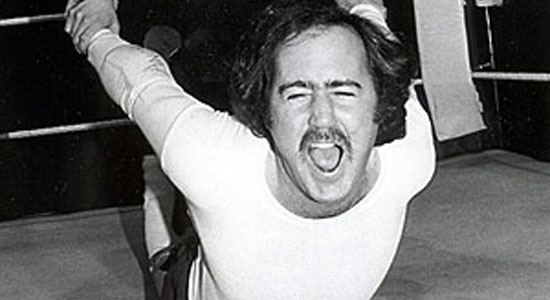












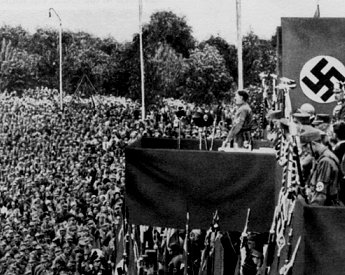



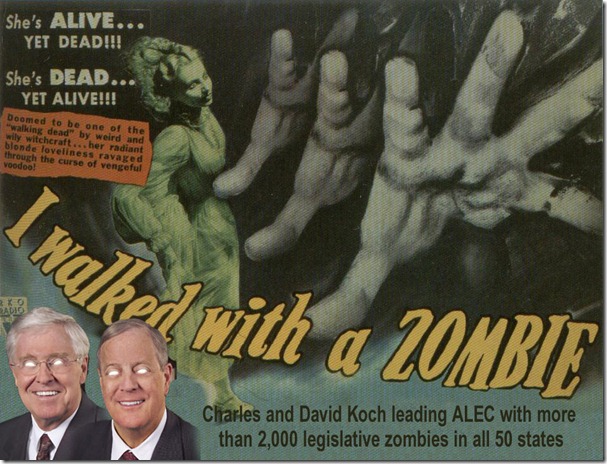



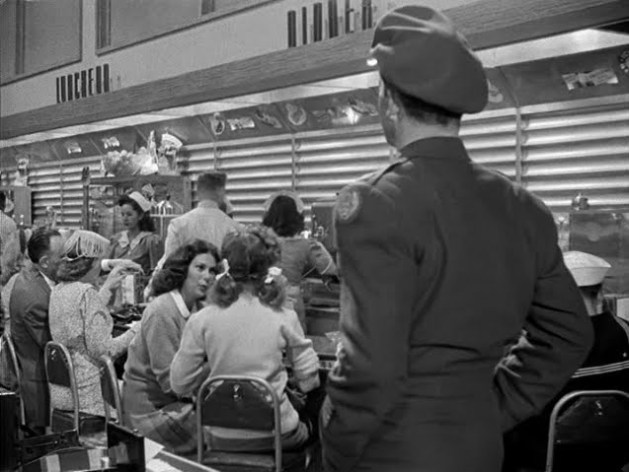


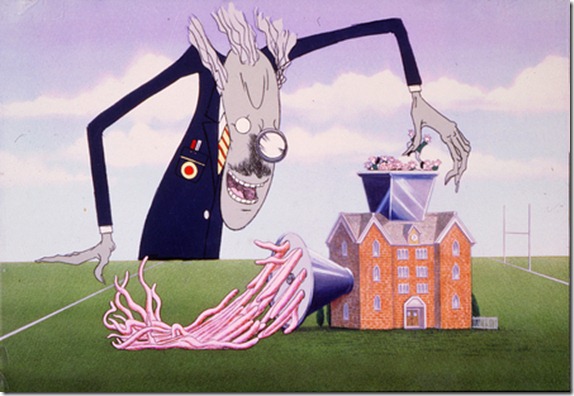


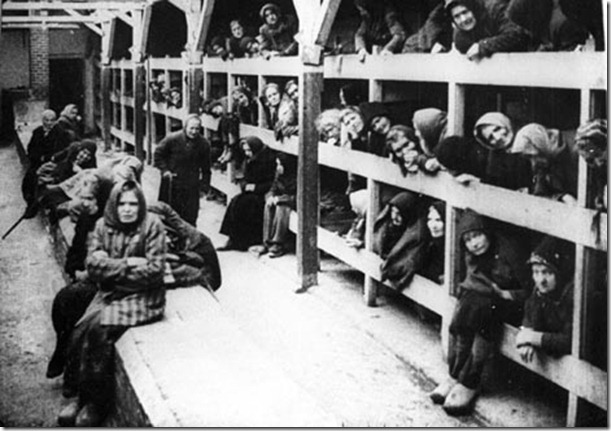


















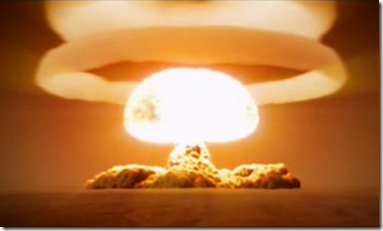




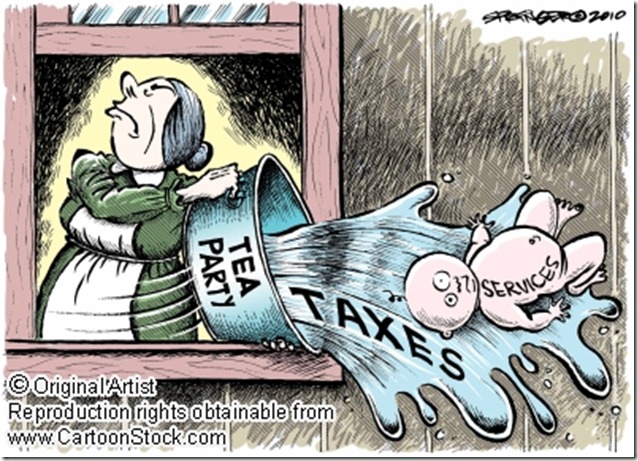










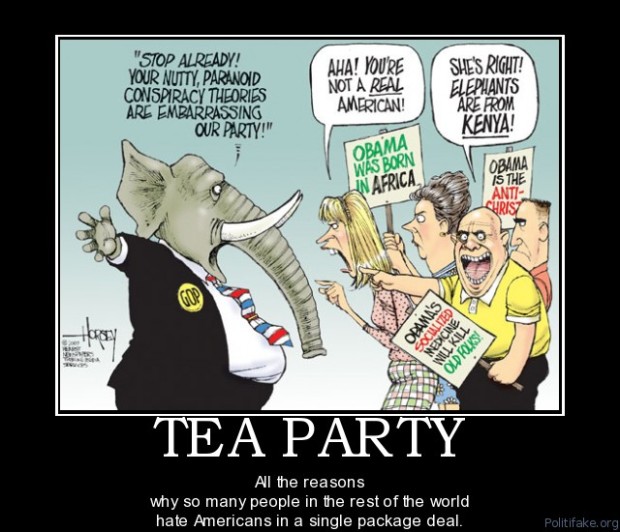
![clip_image006[4] clip_image006[4]](https://apocalypseknow.files.wordpress.com/2012/06/clip_image0064.jpg?w=615&h=242)
